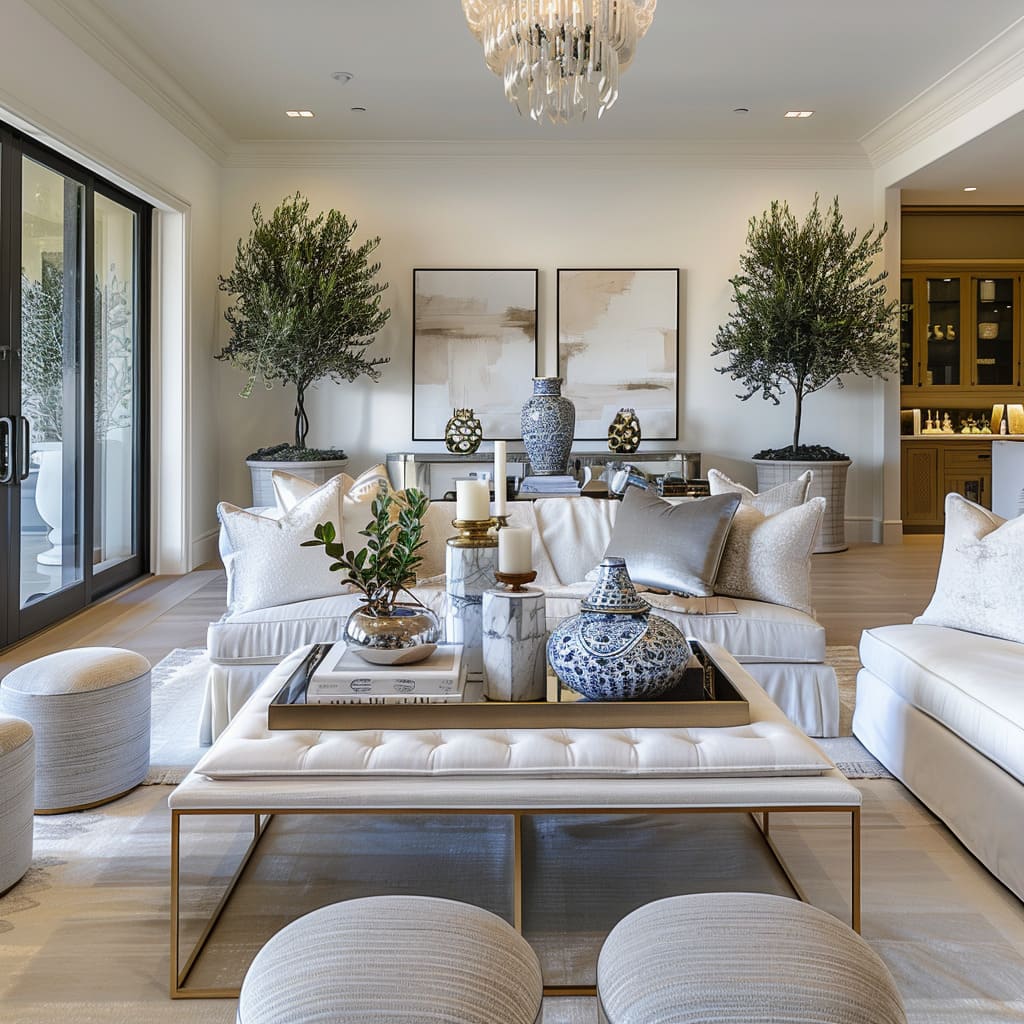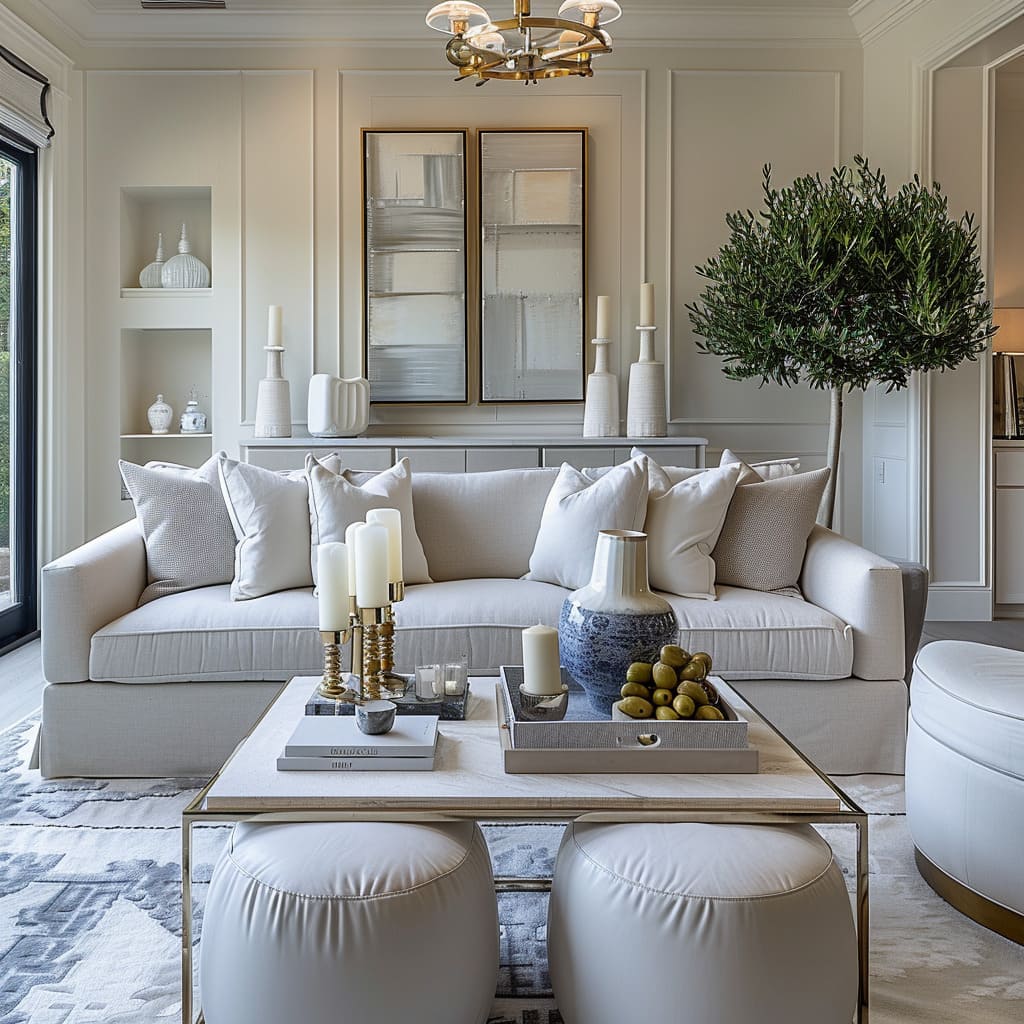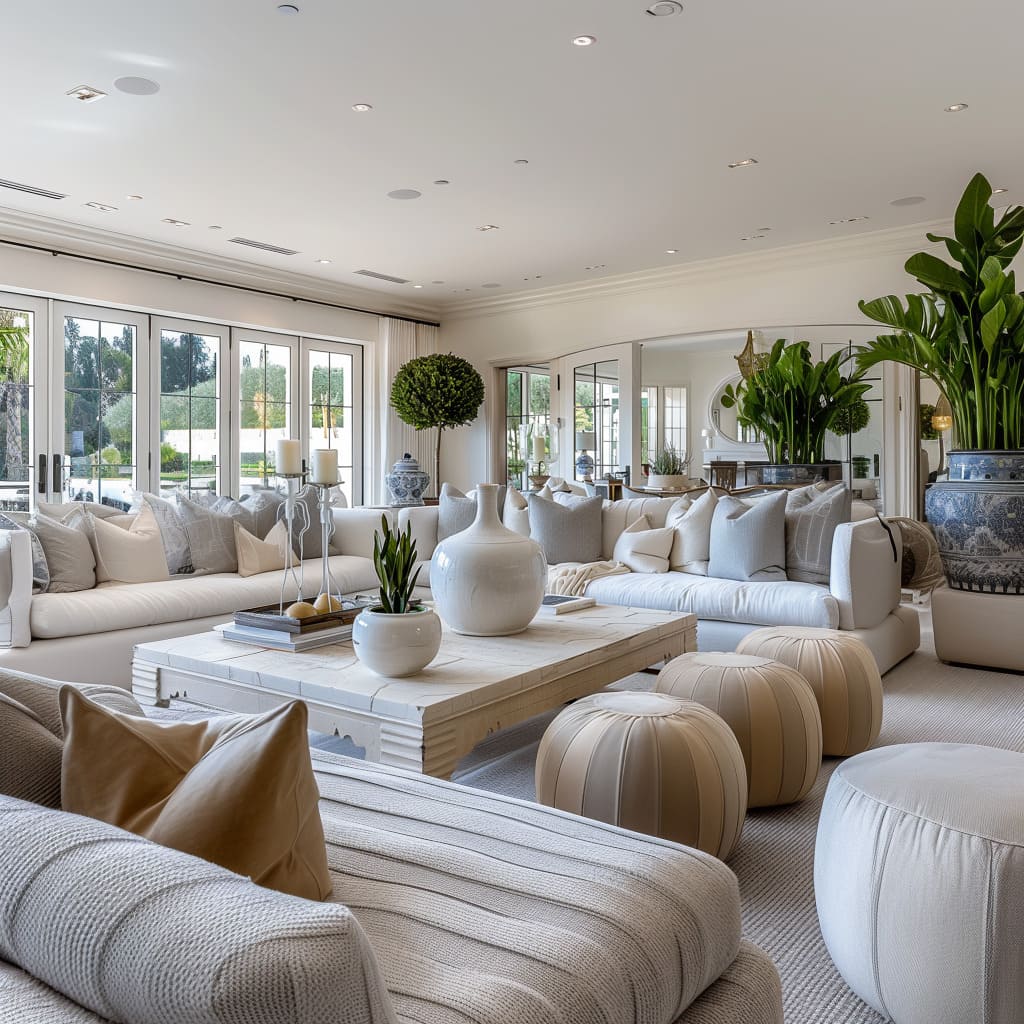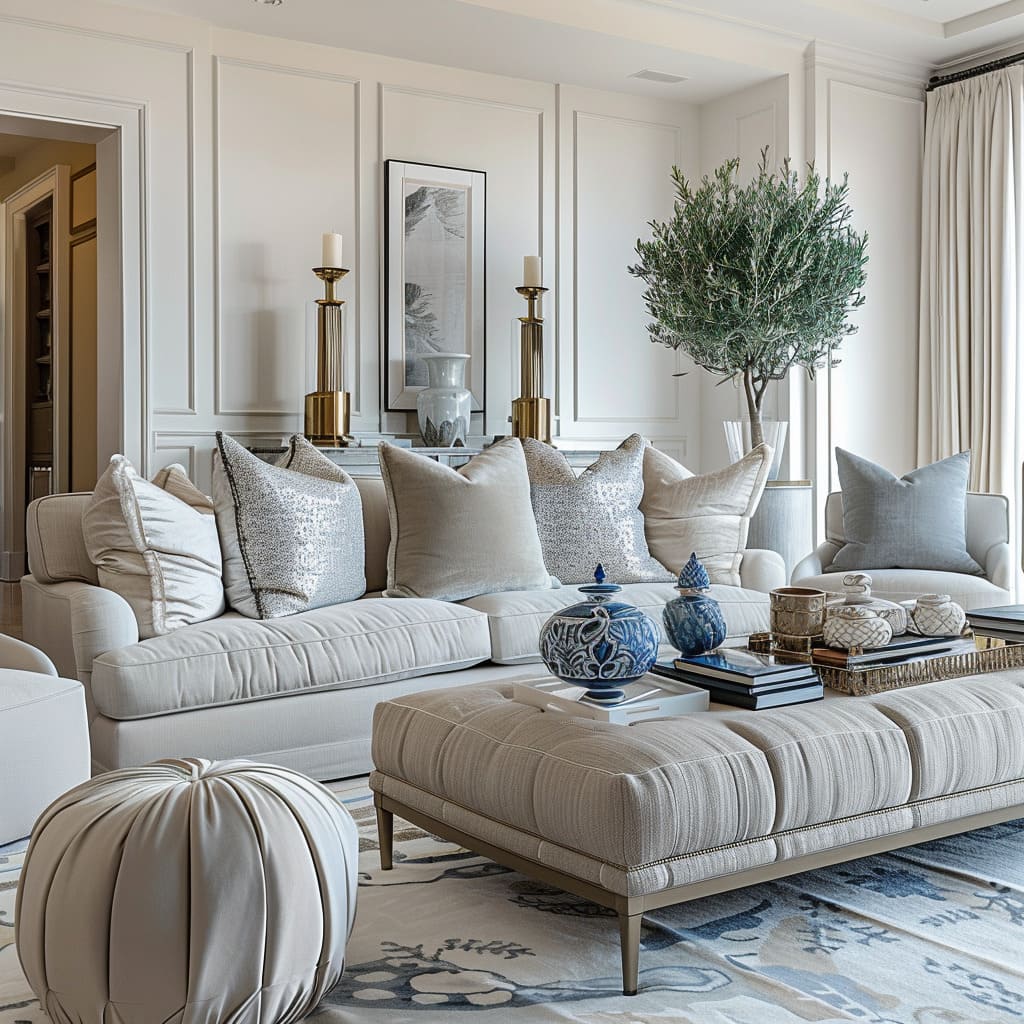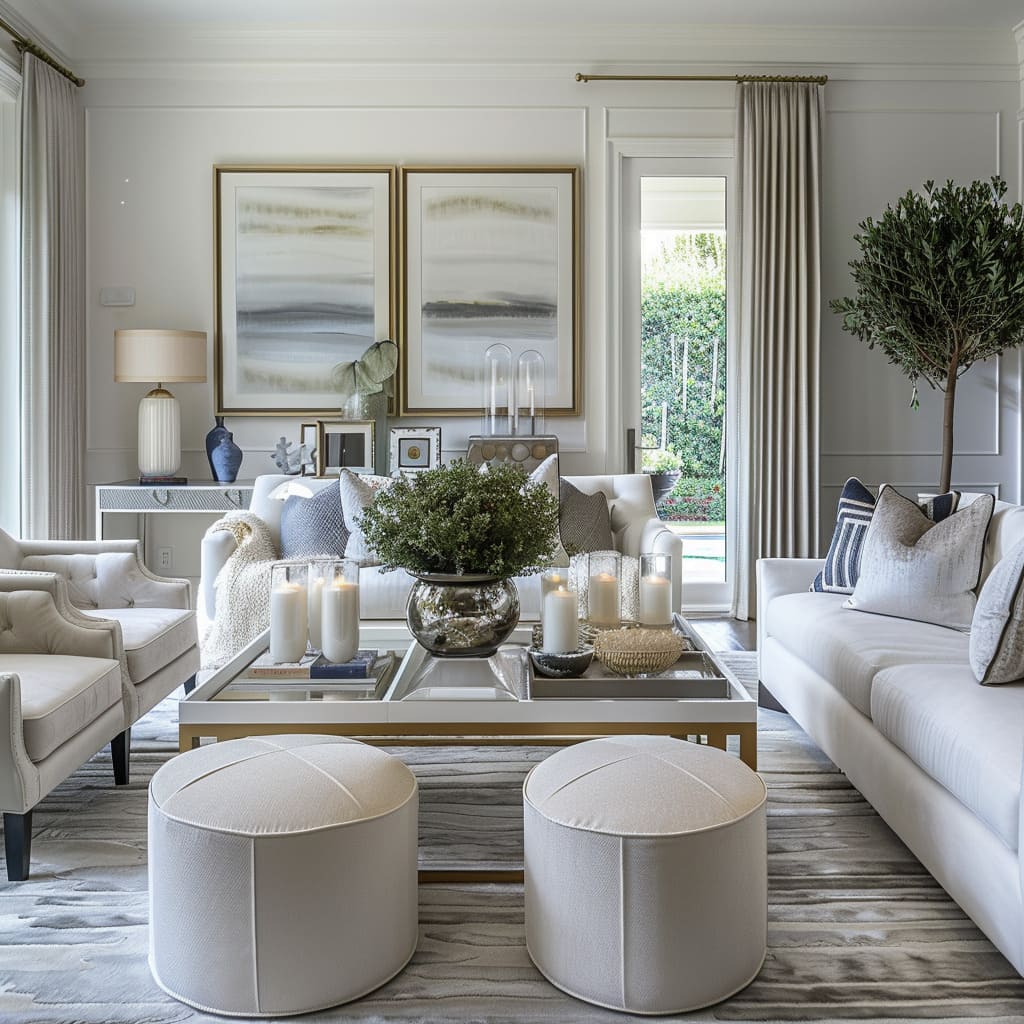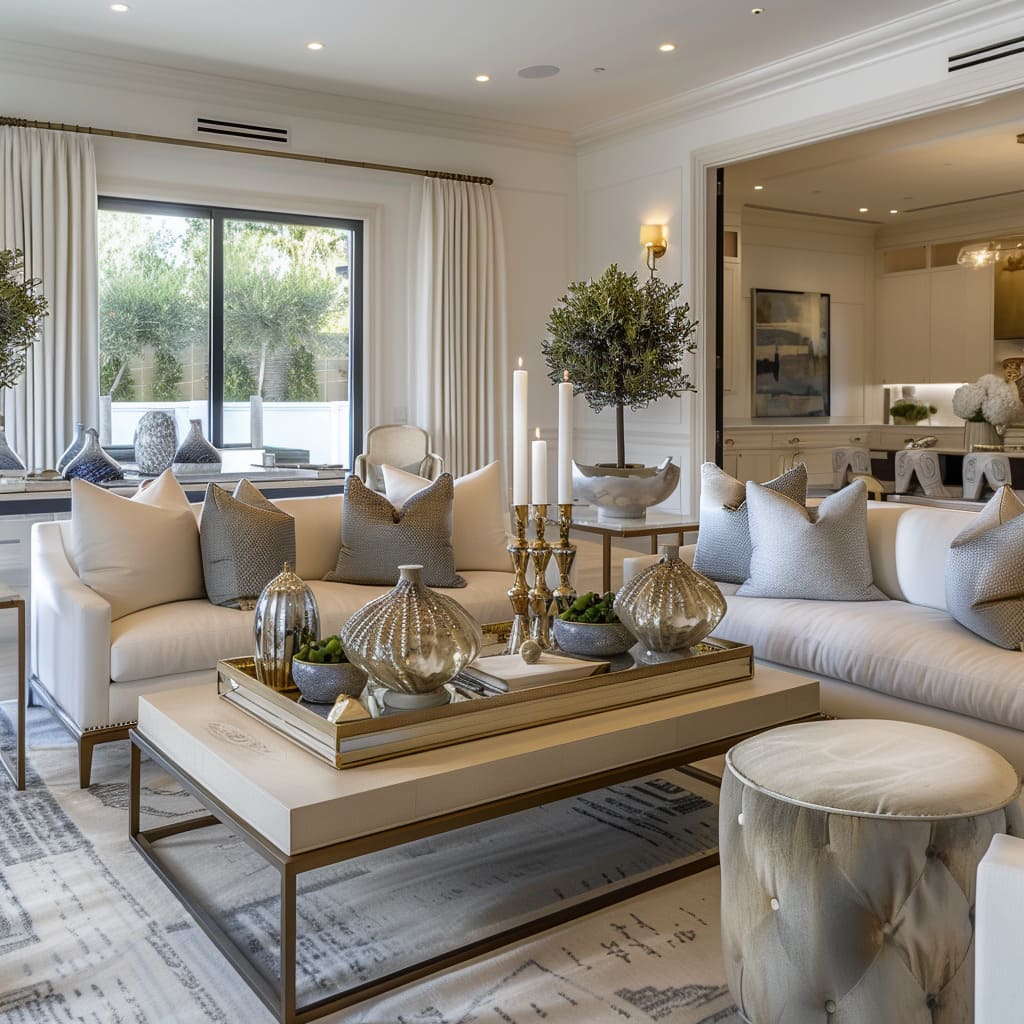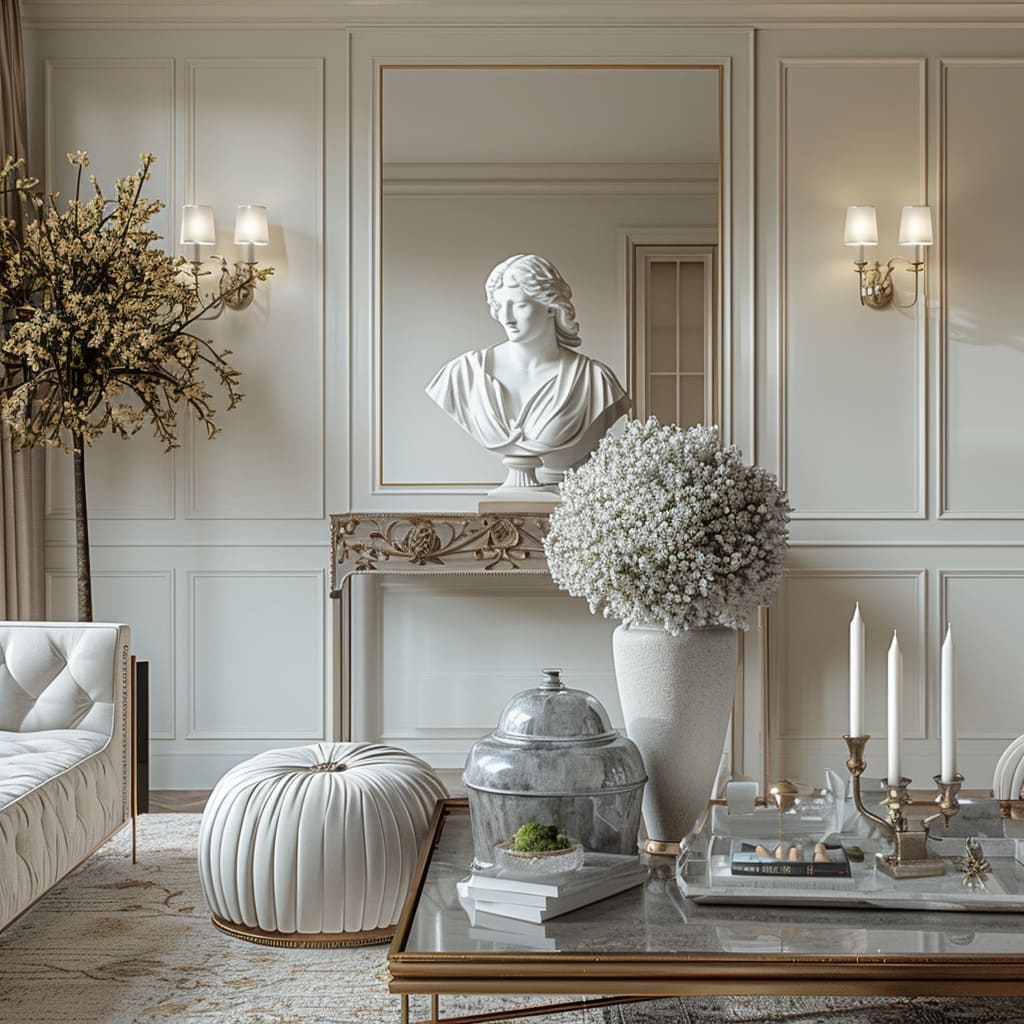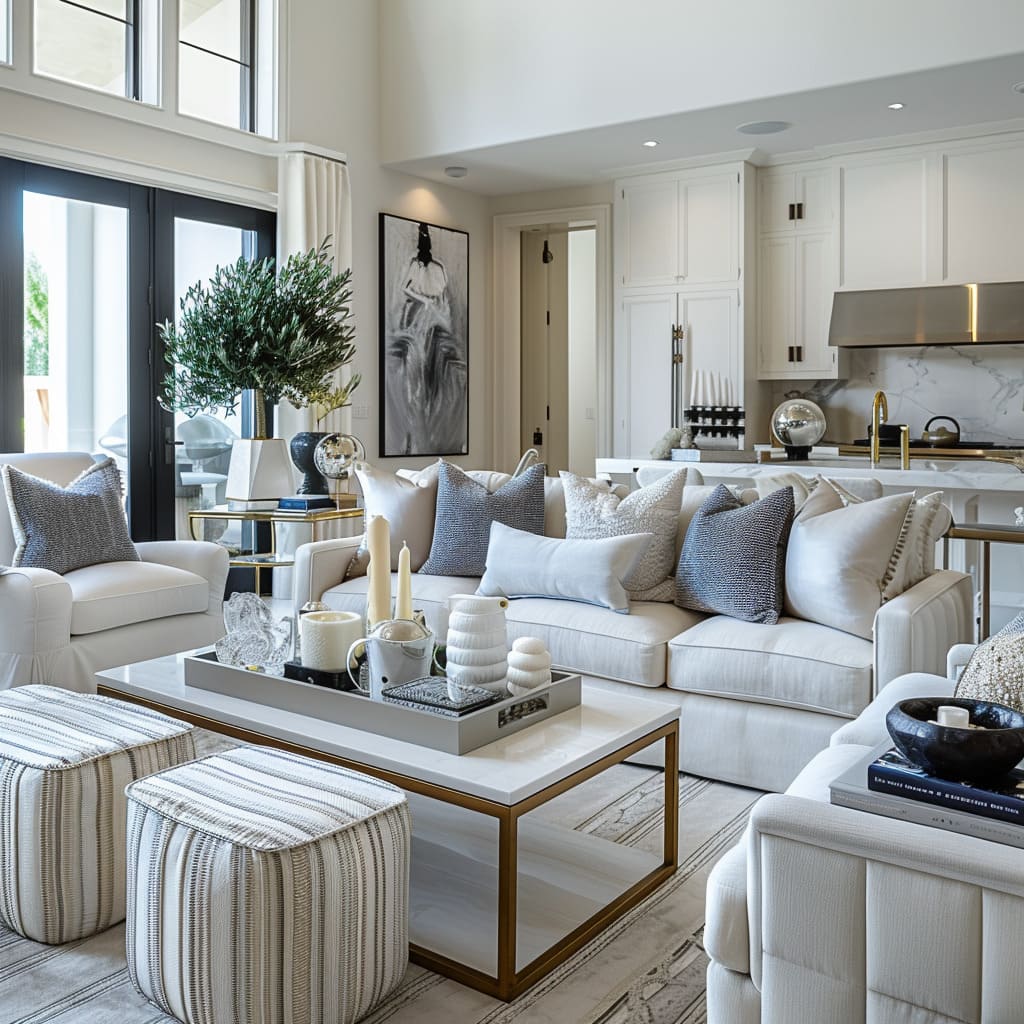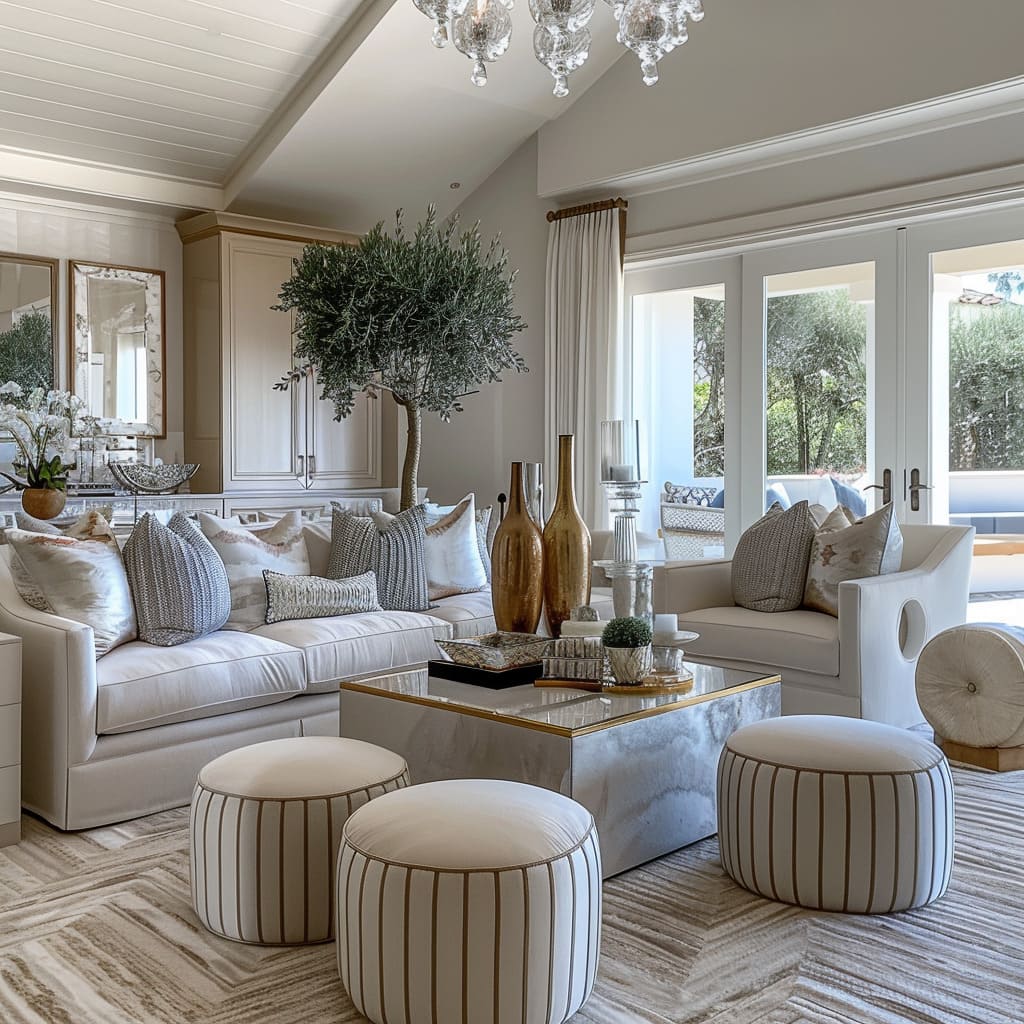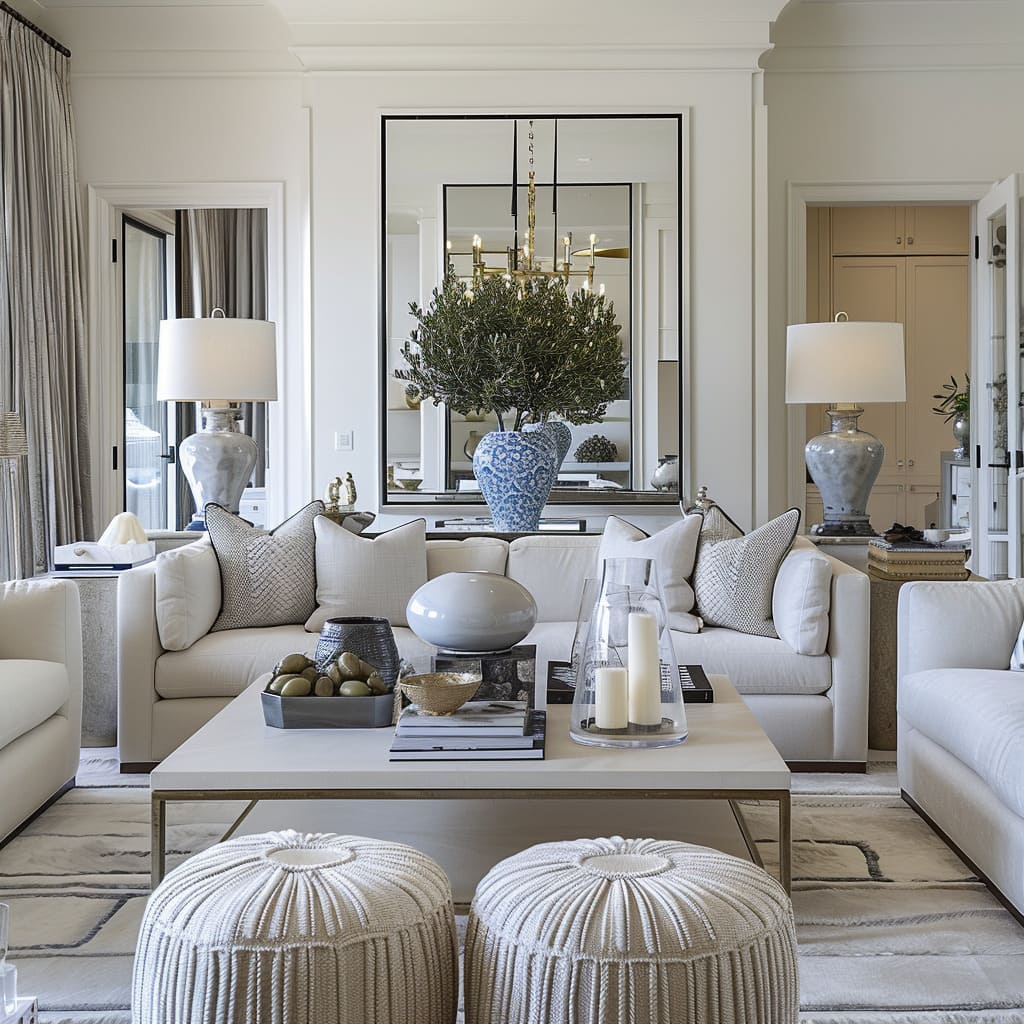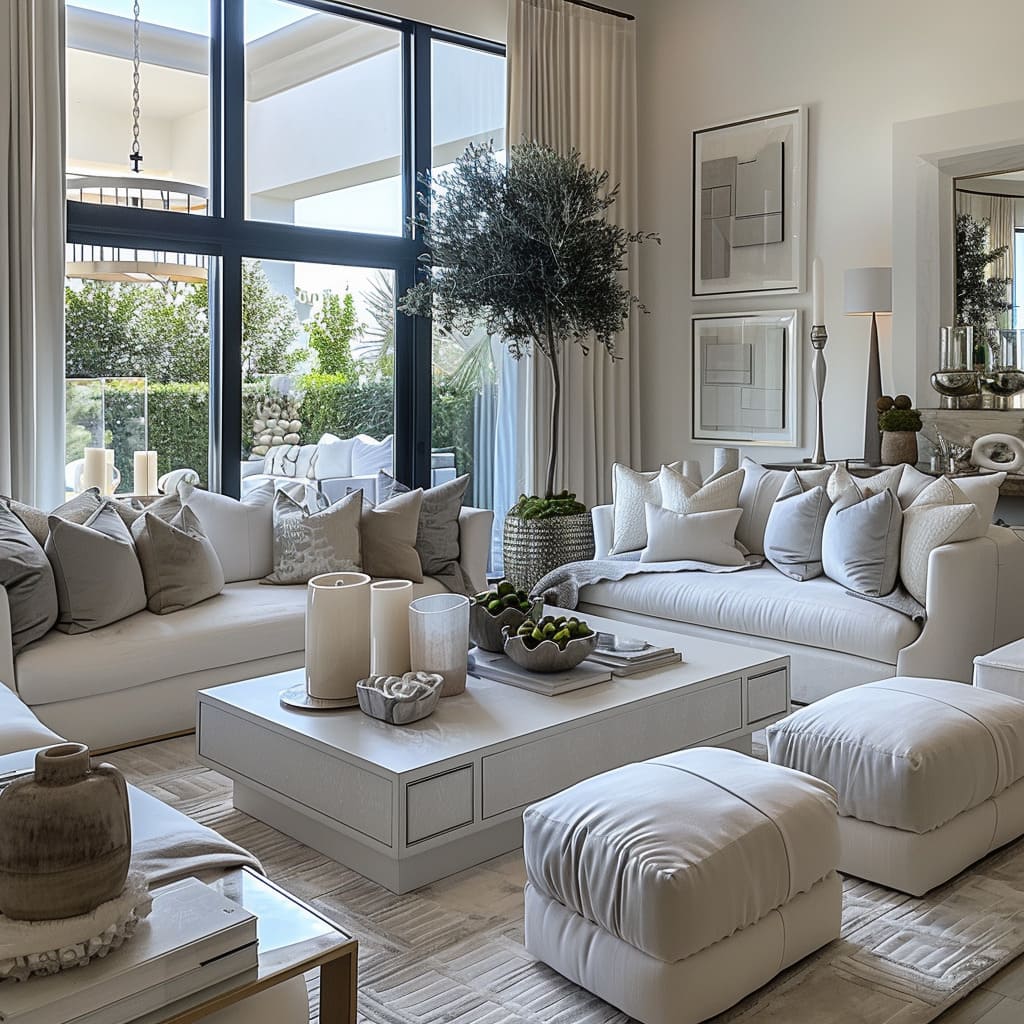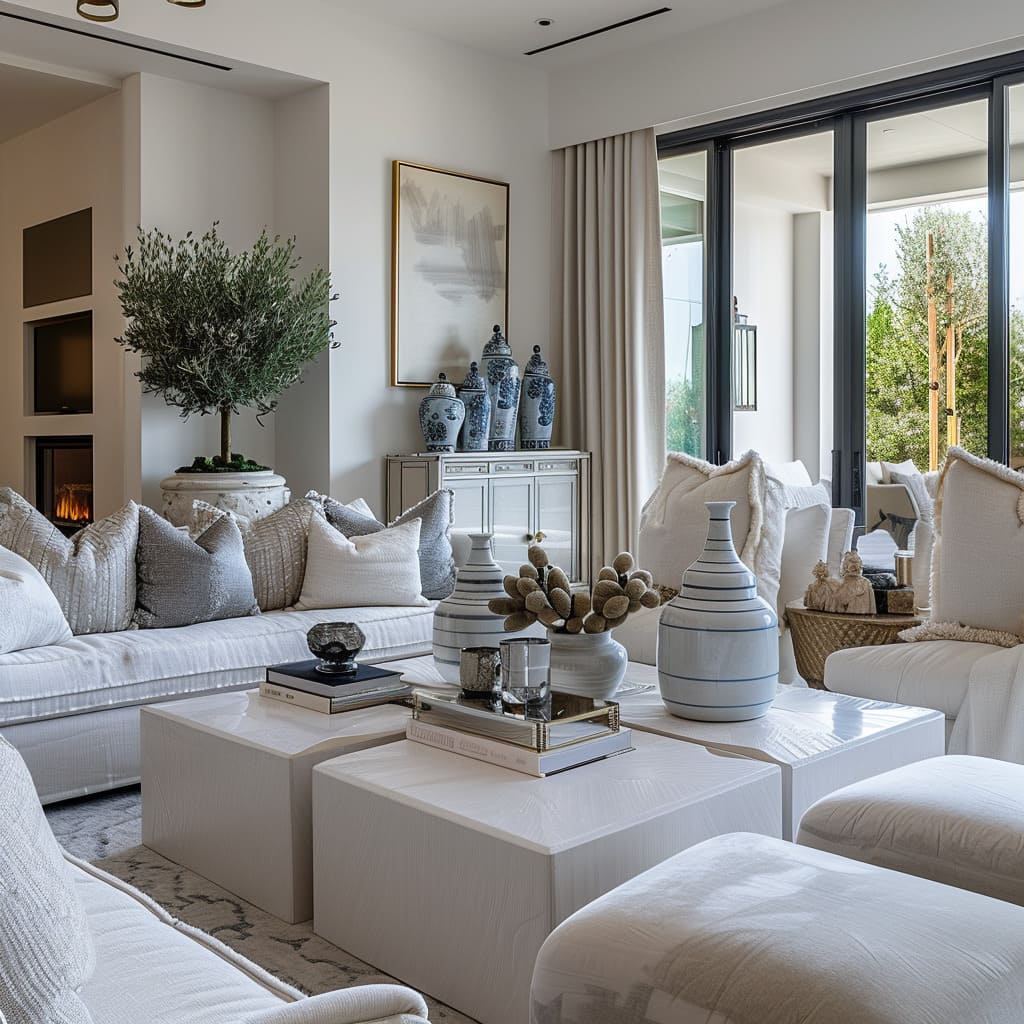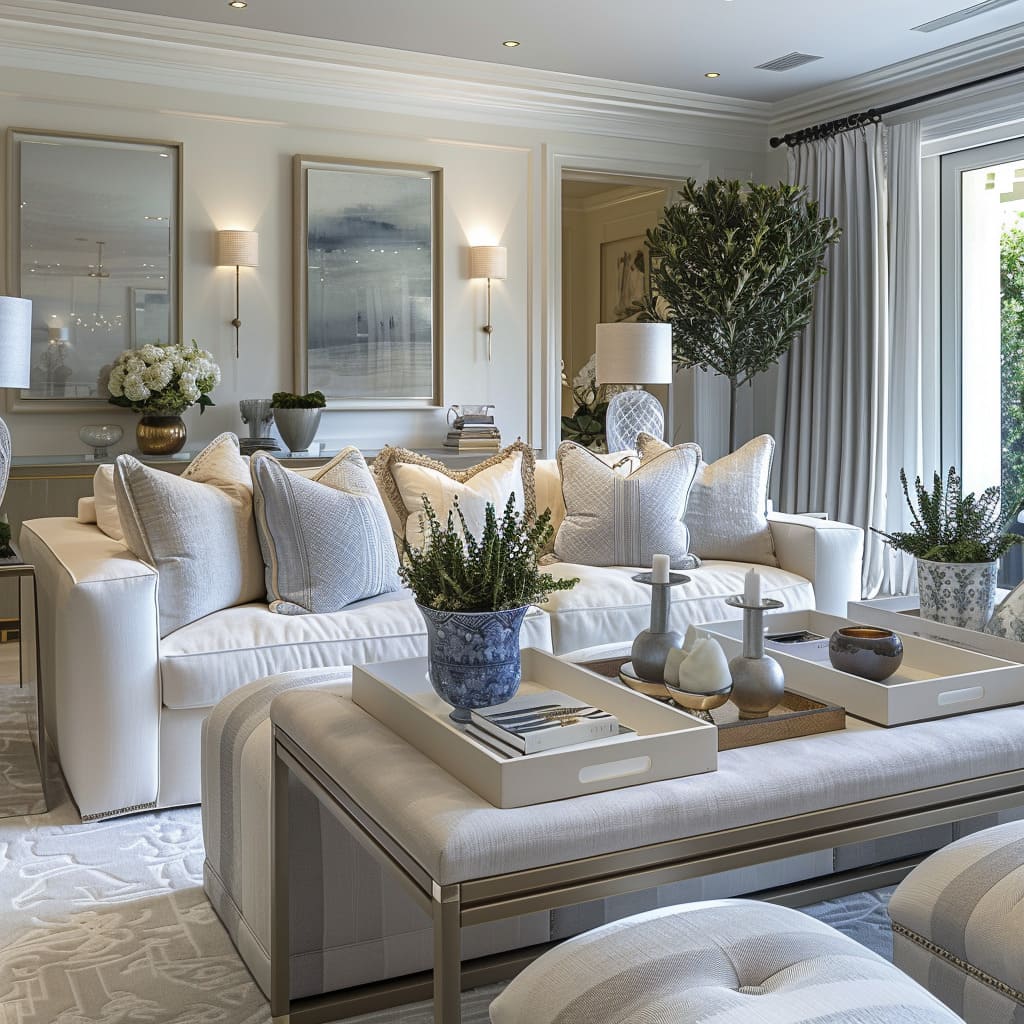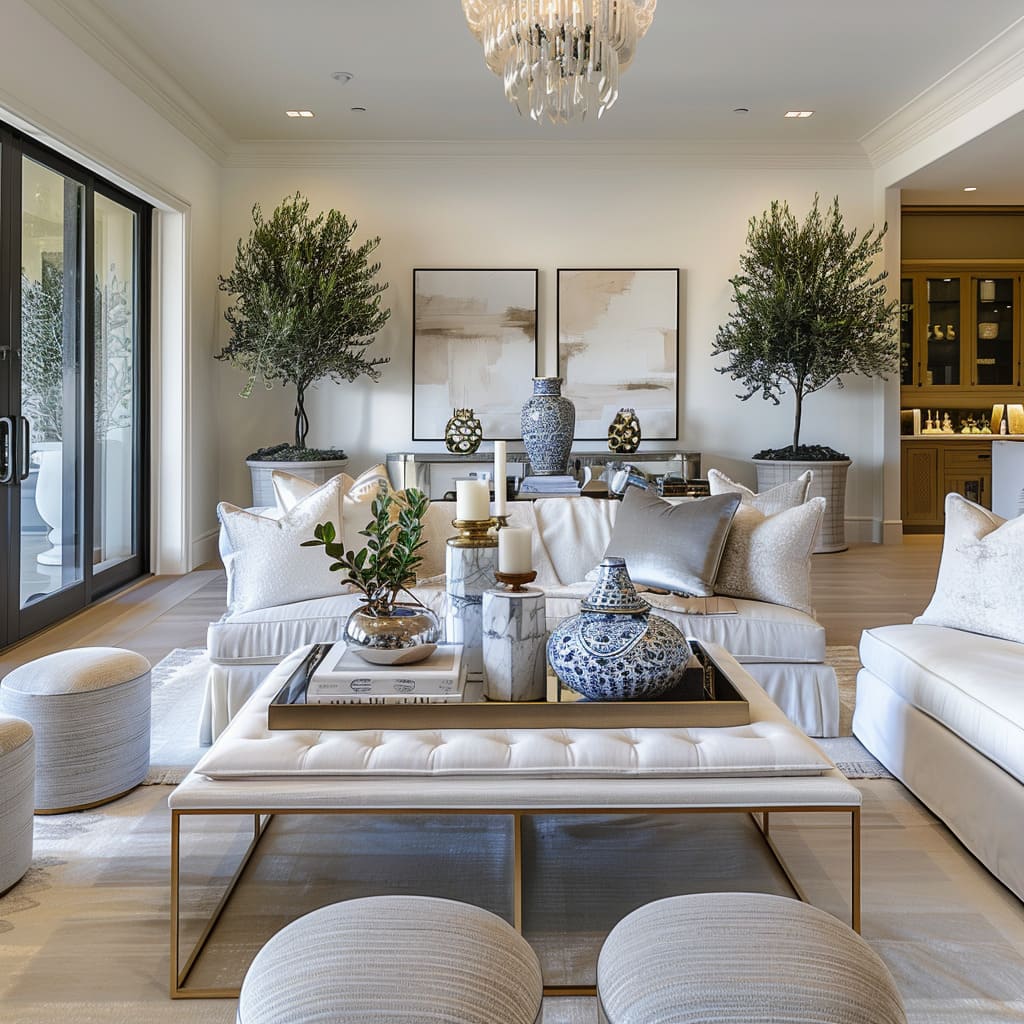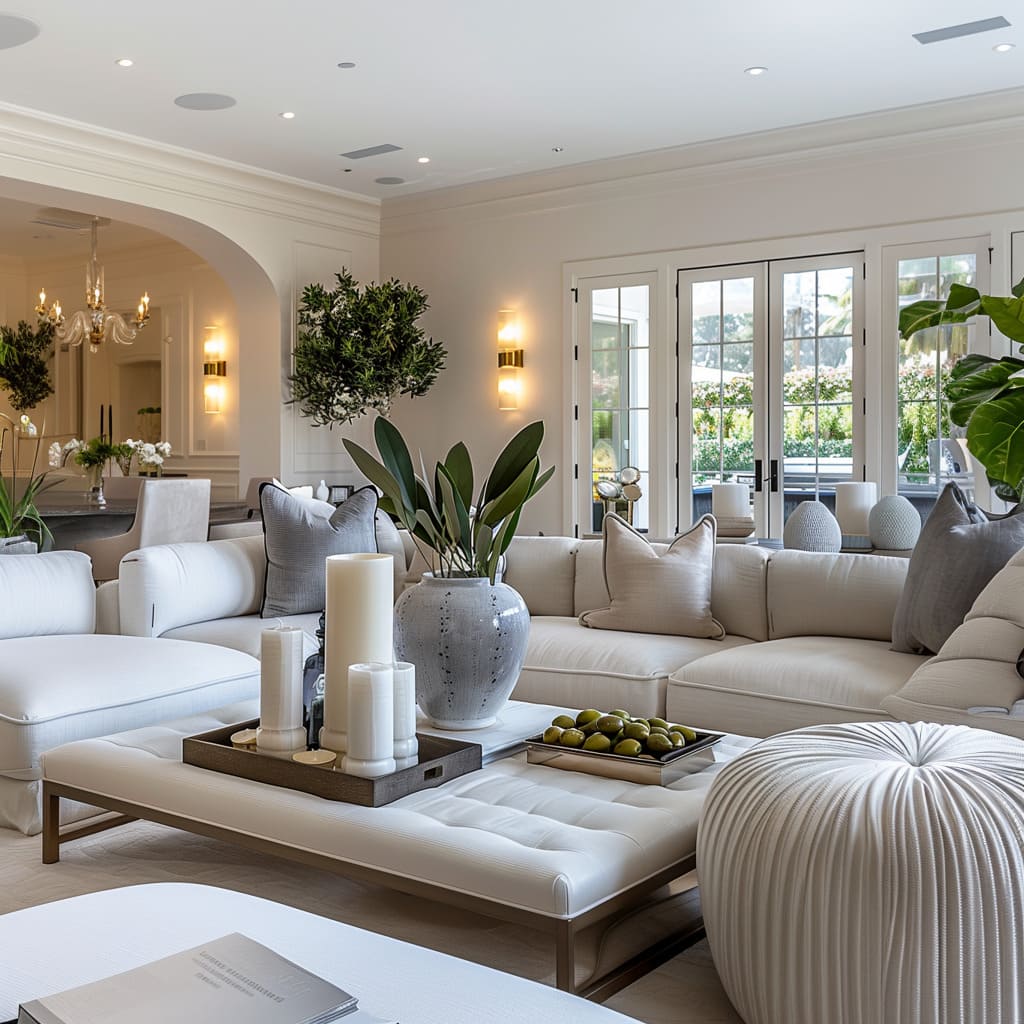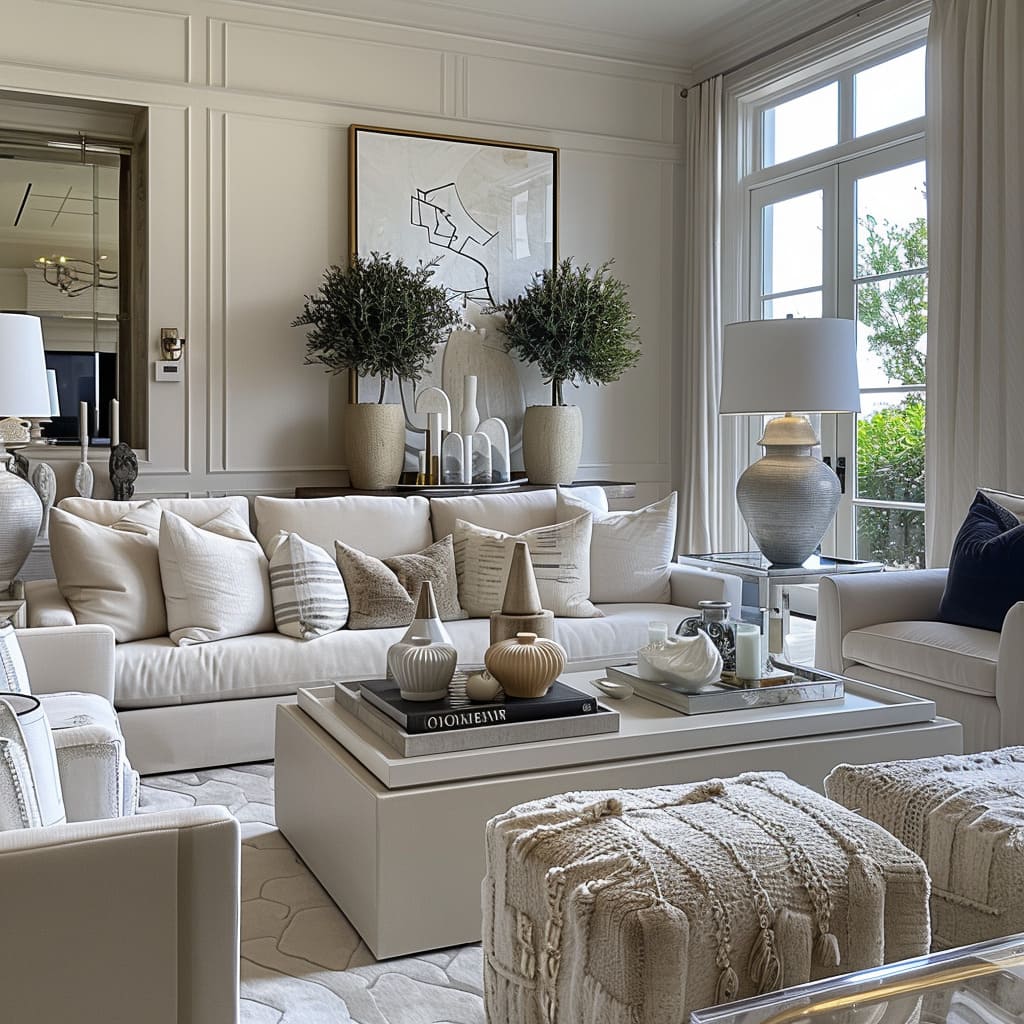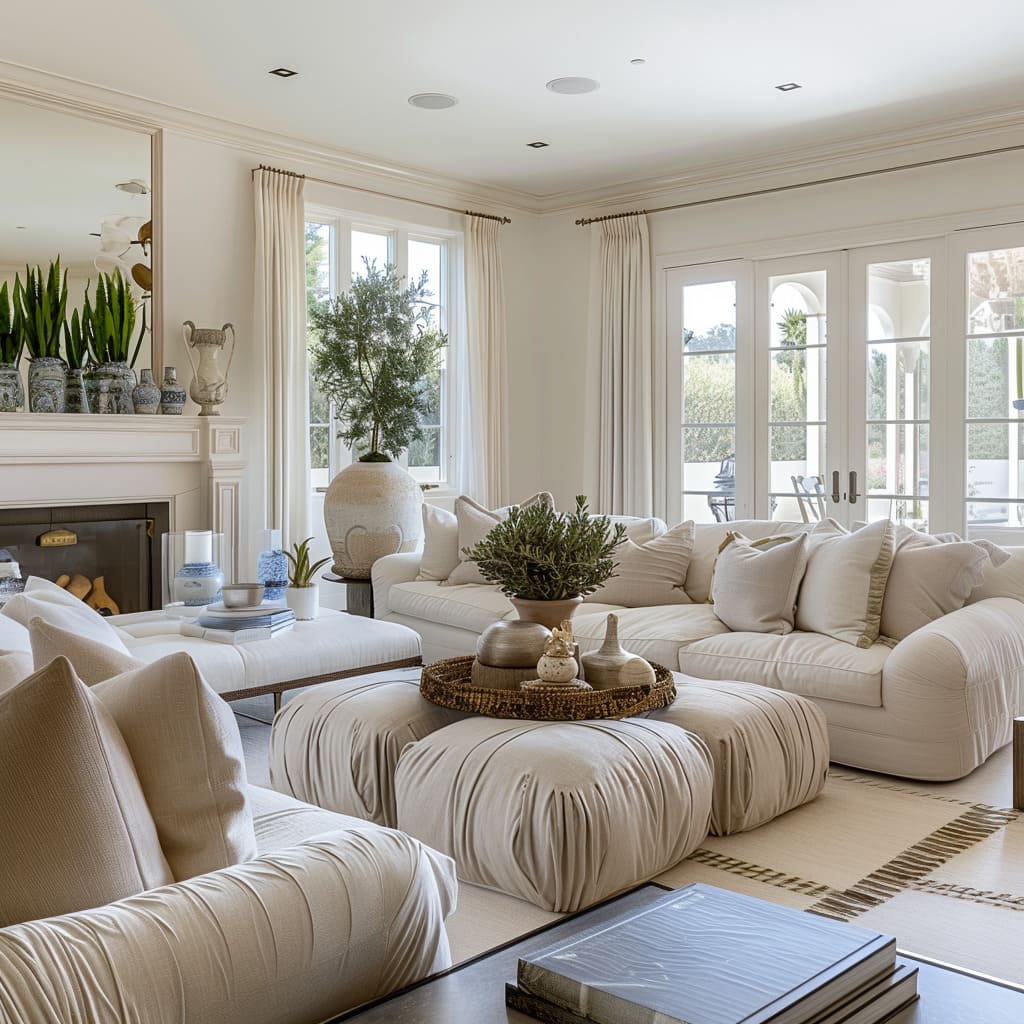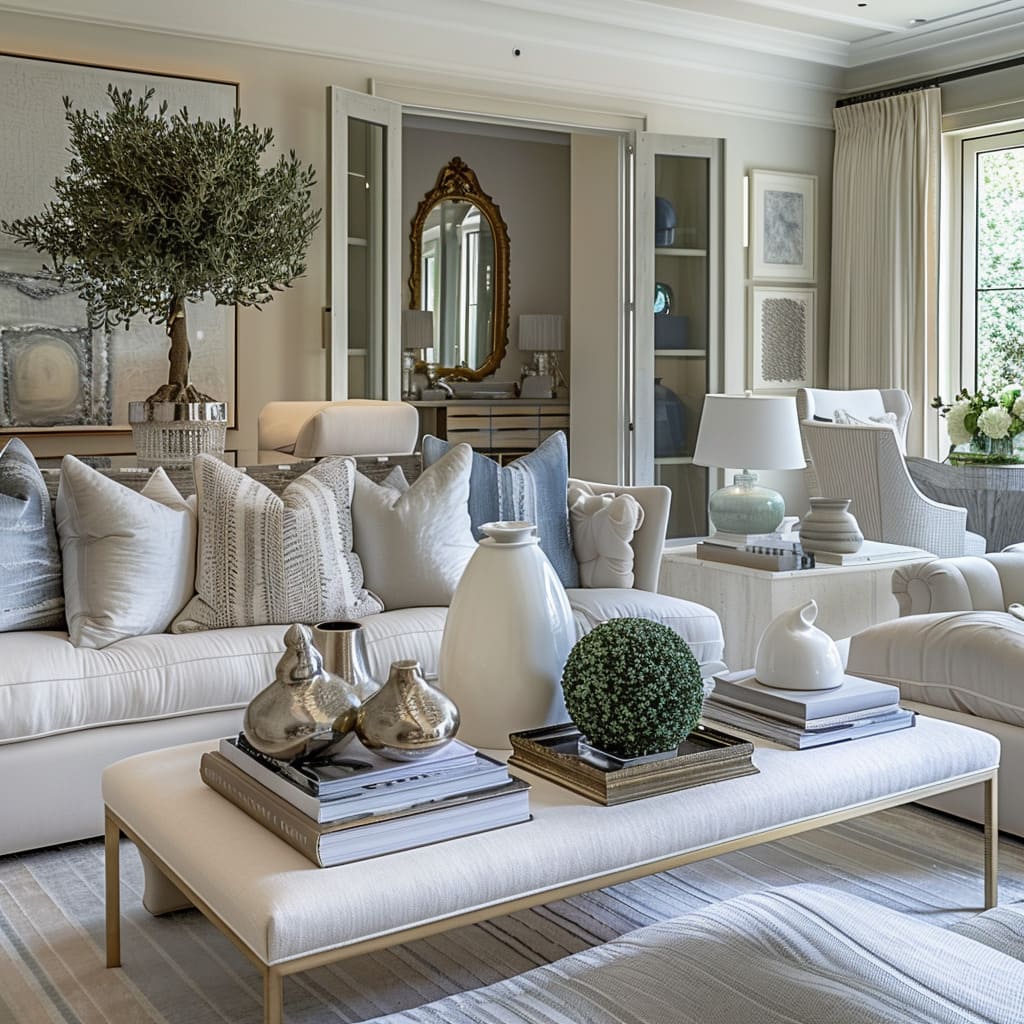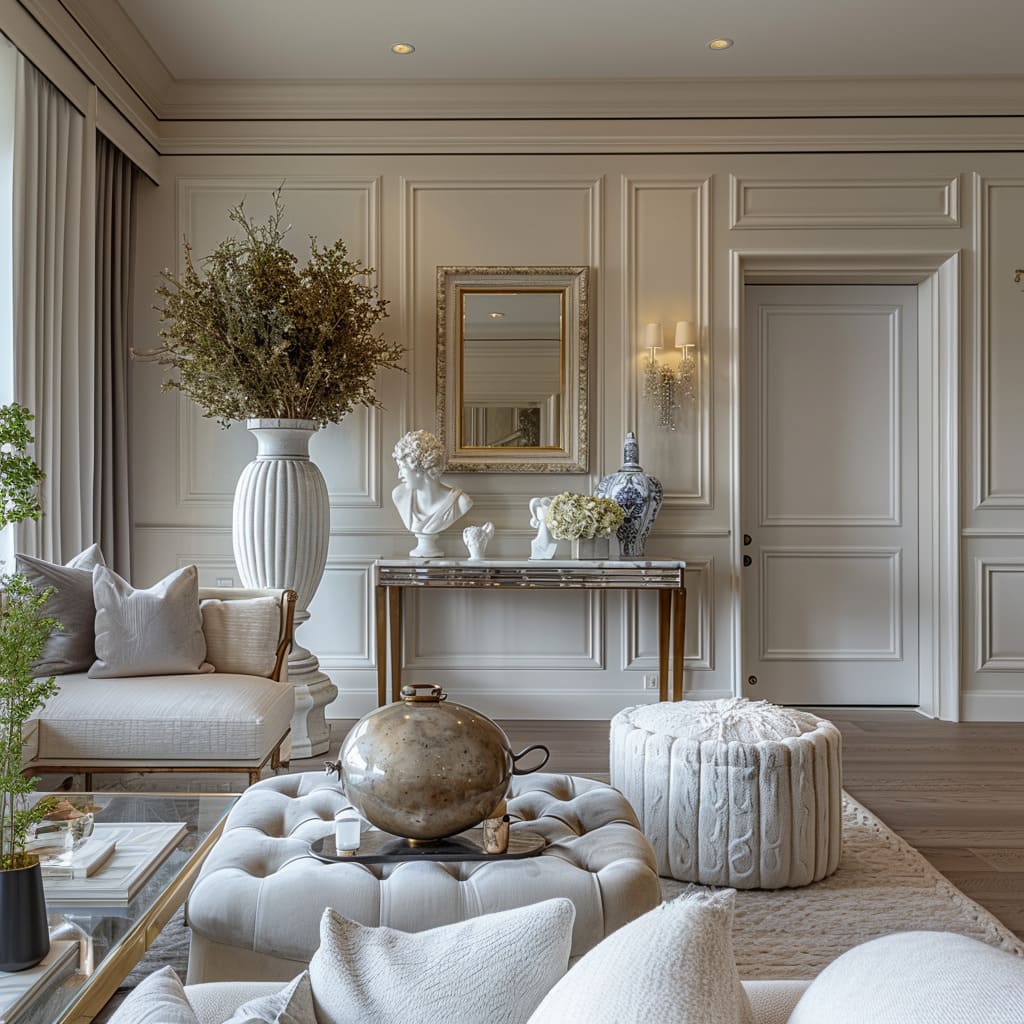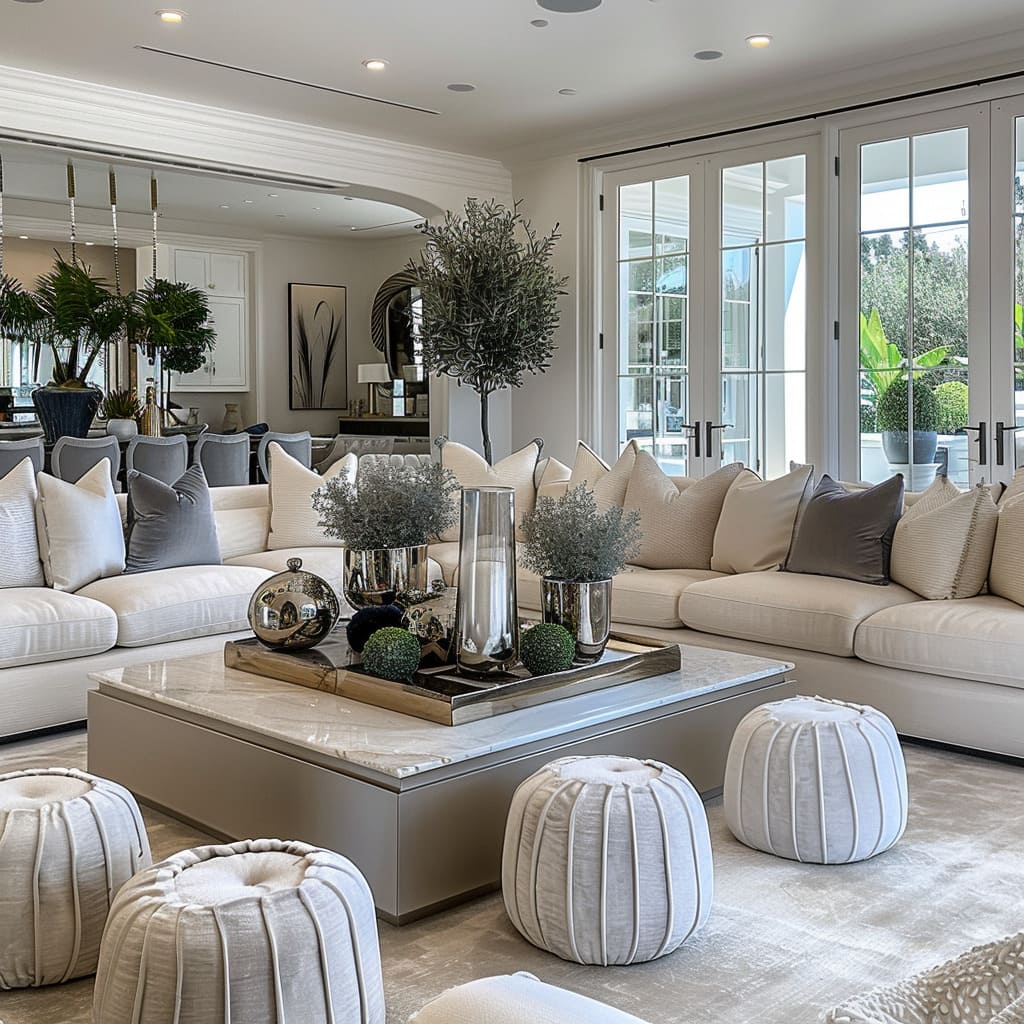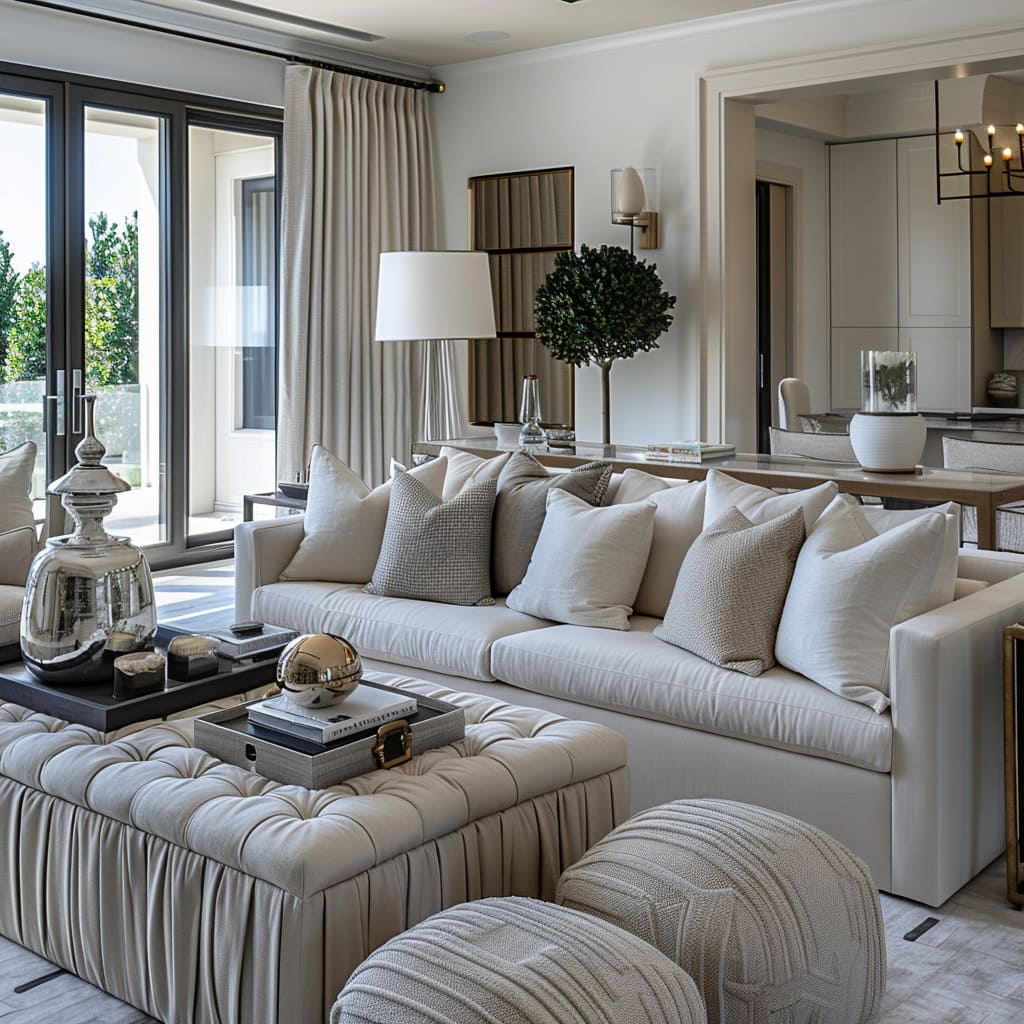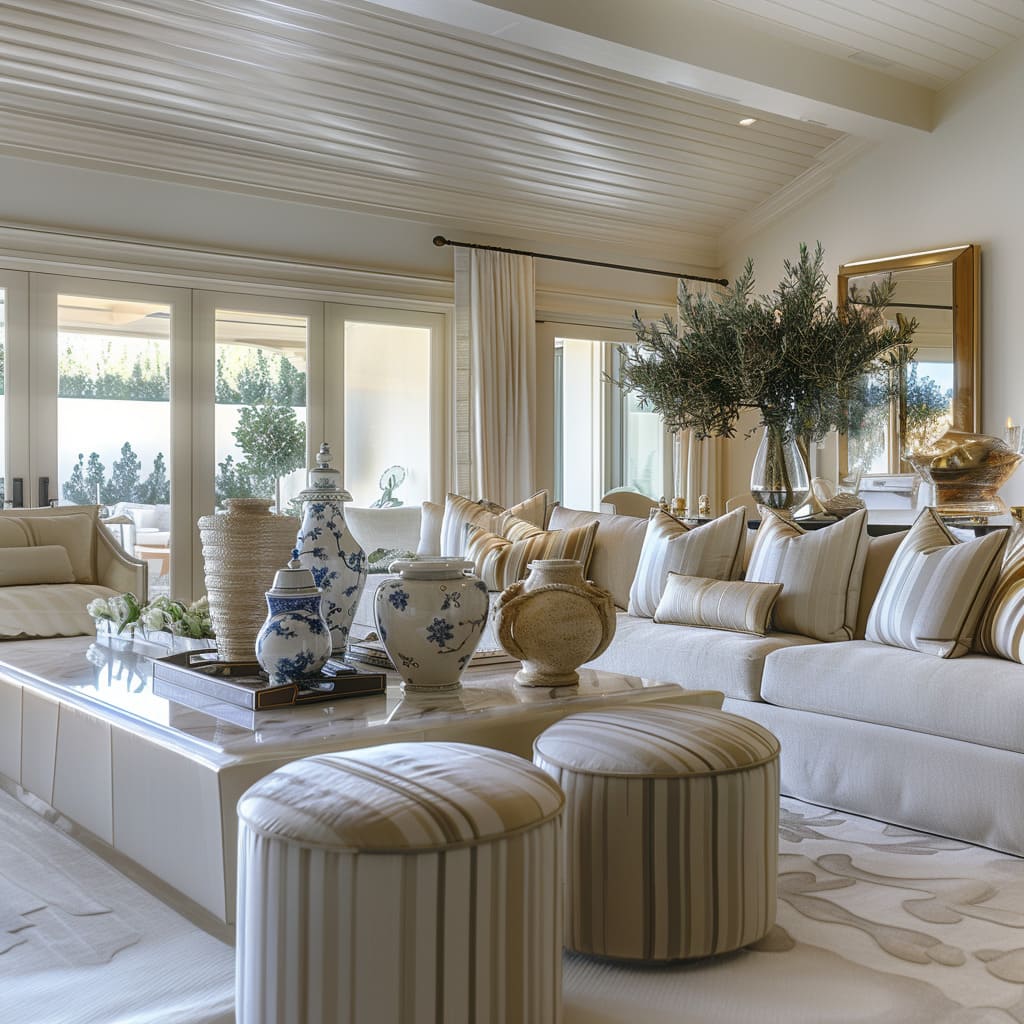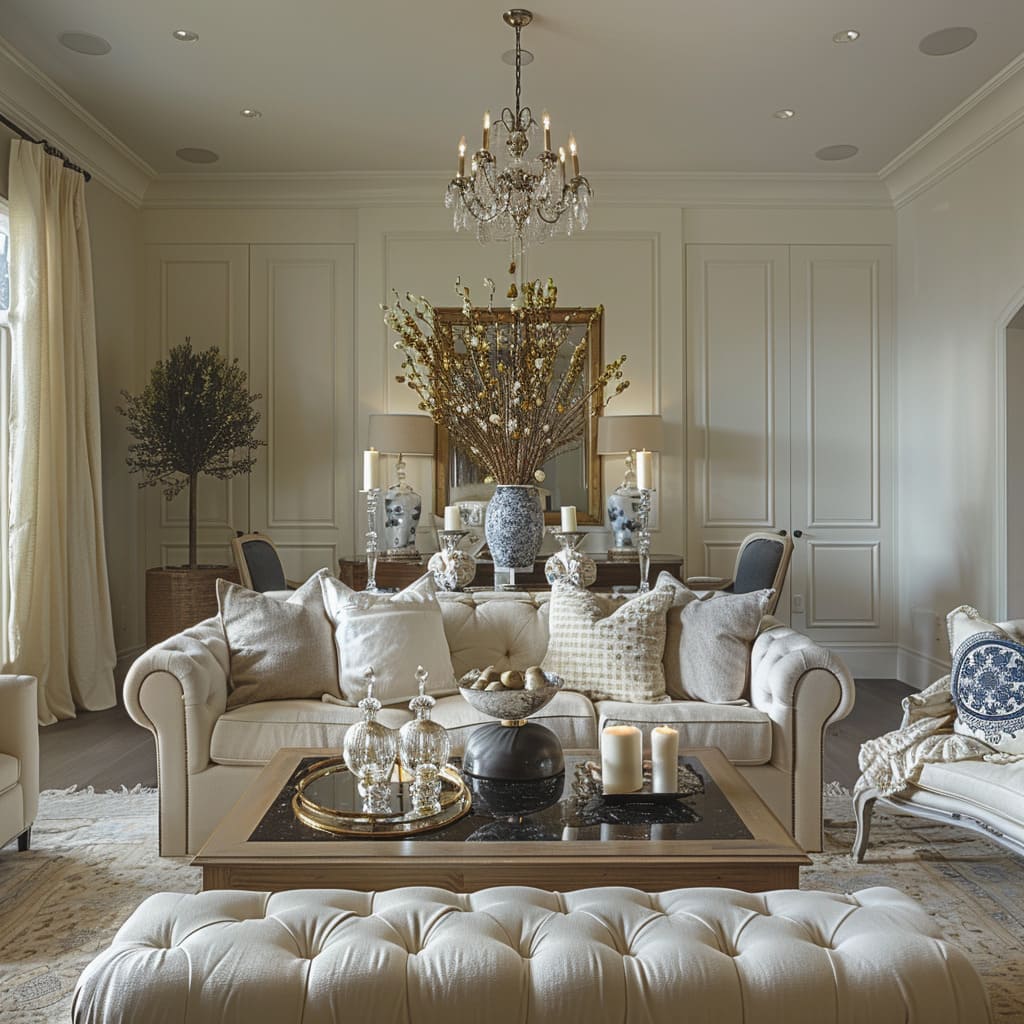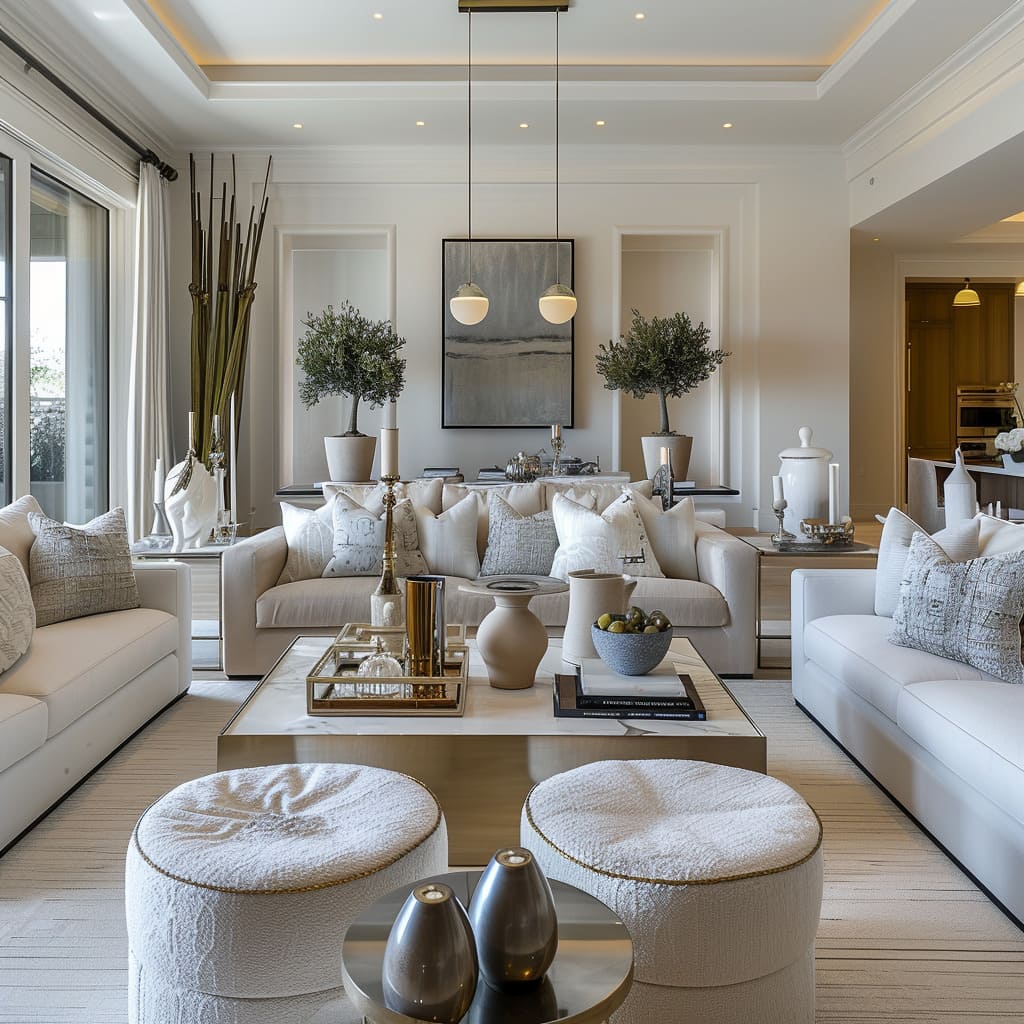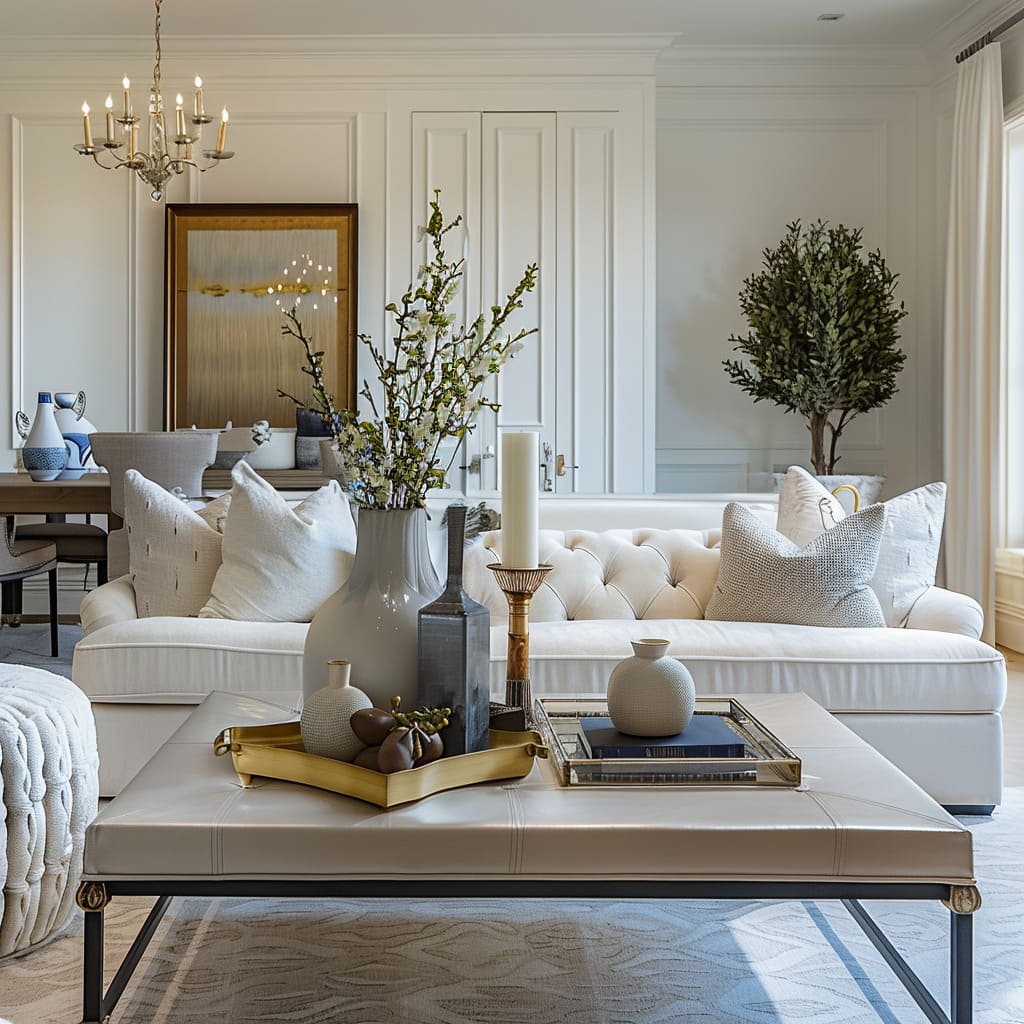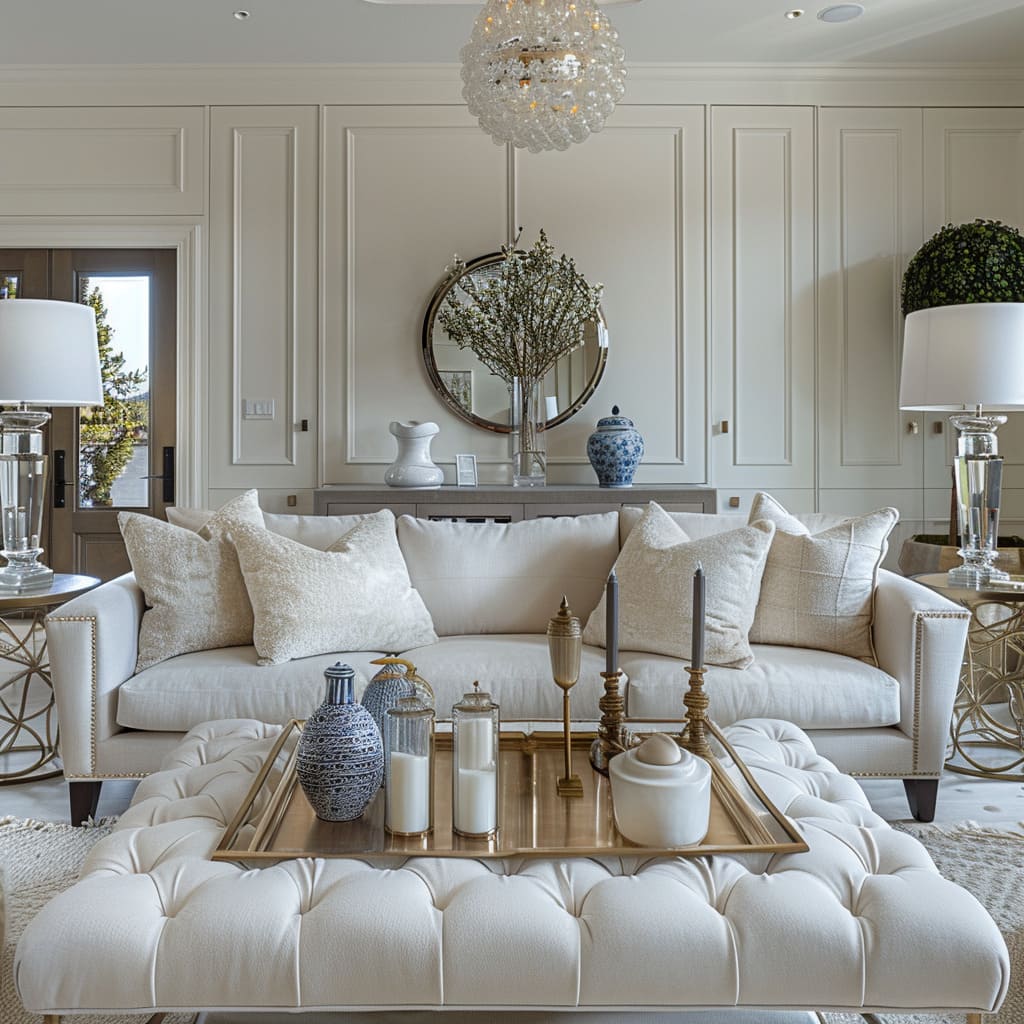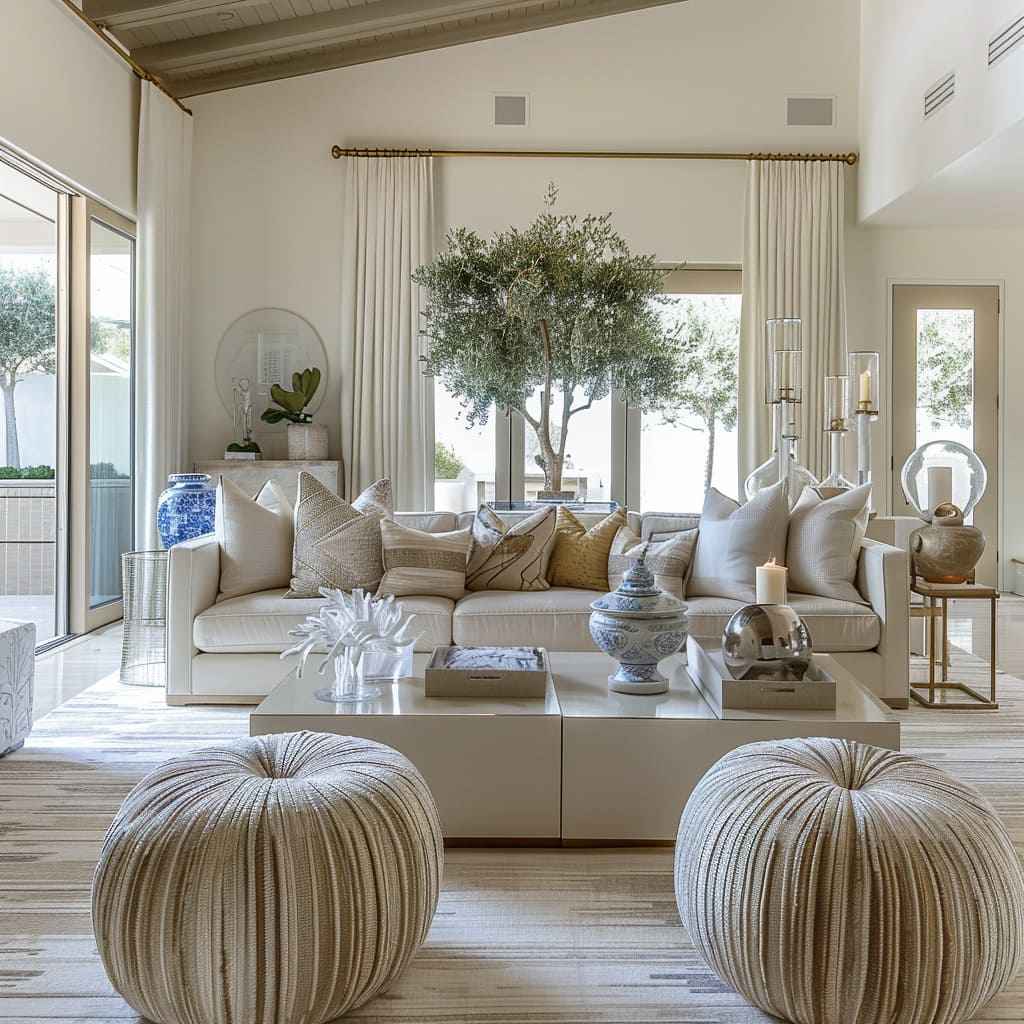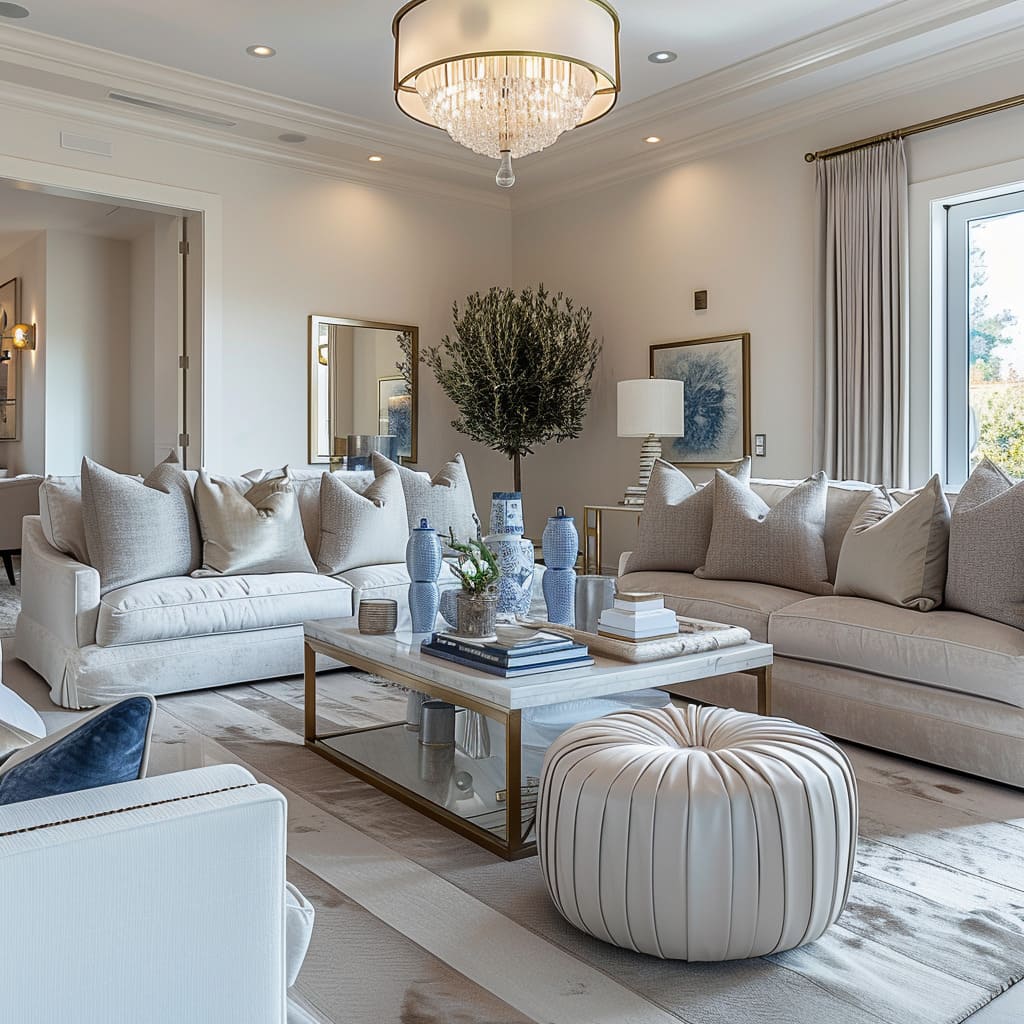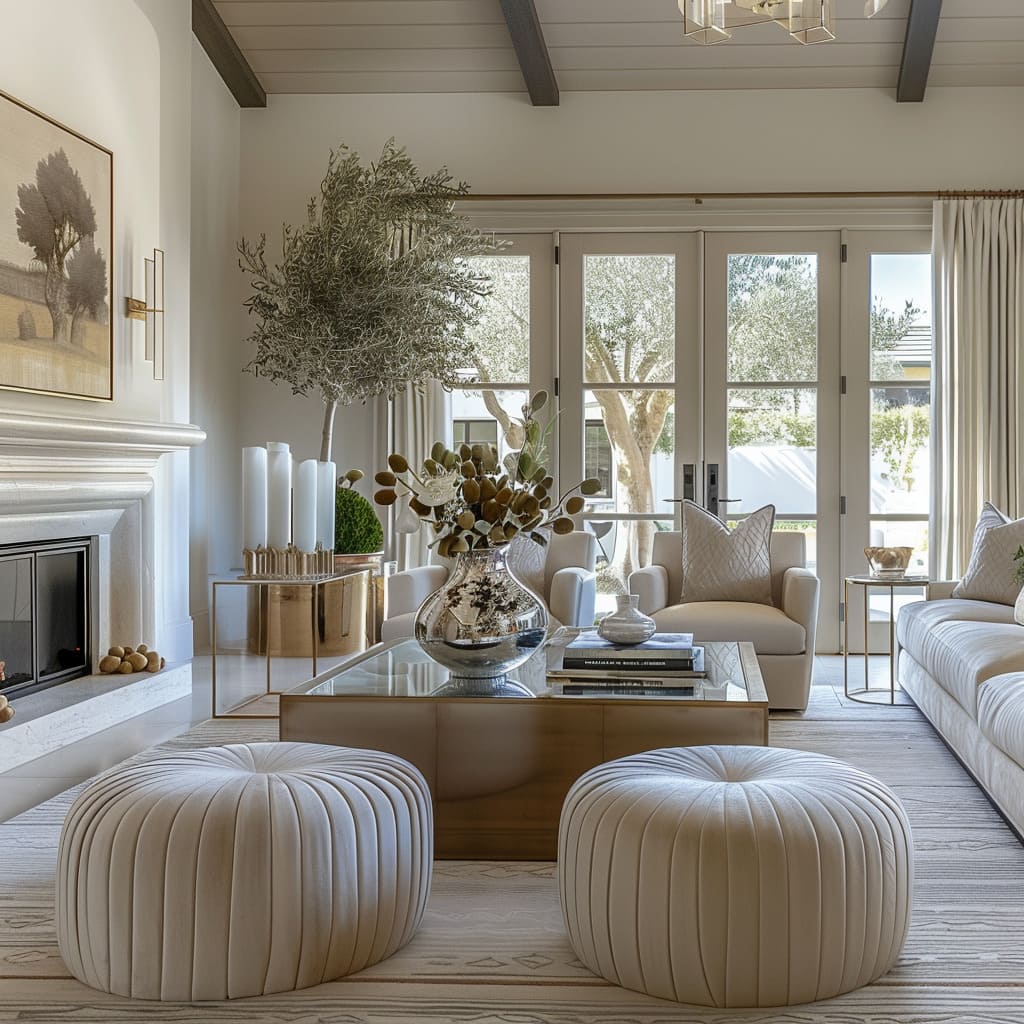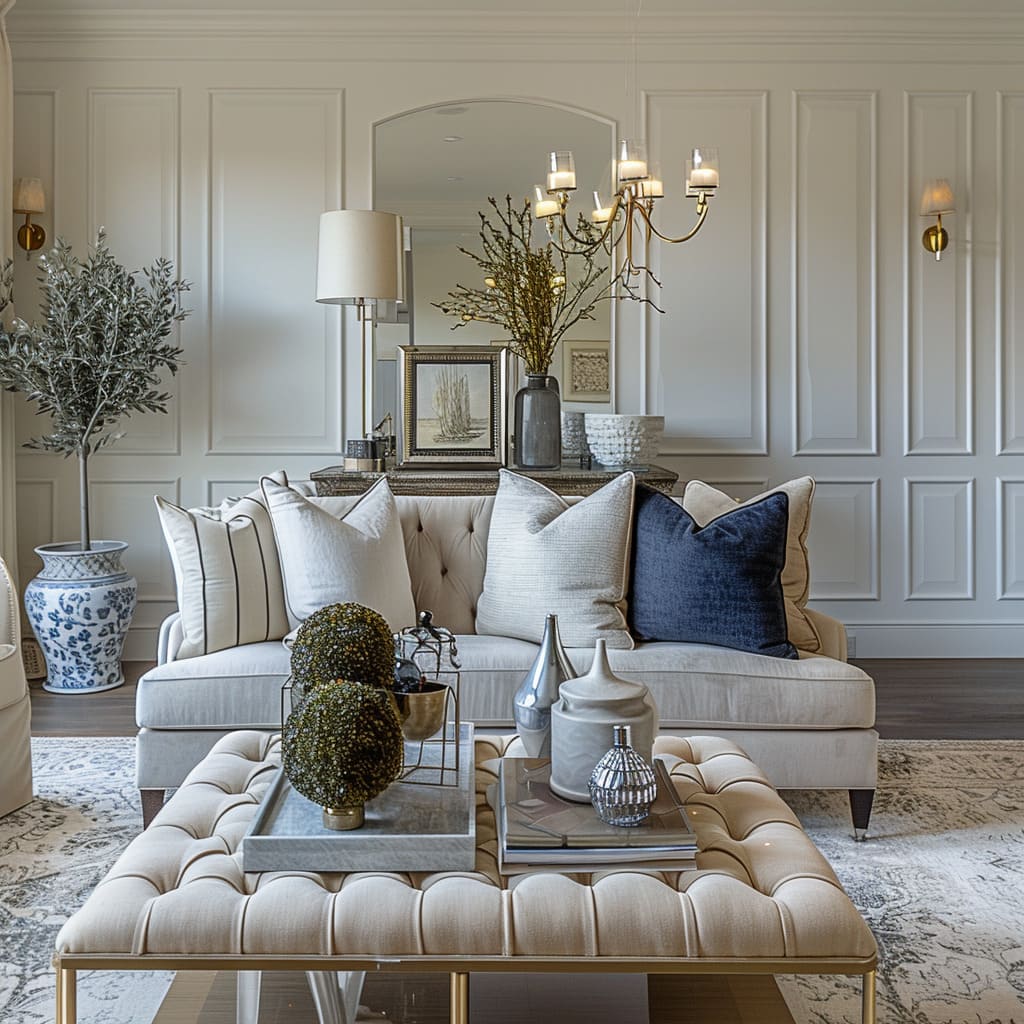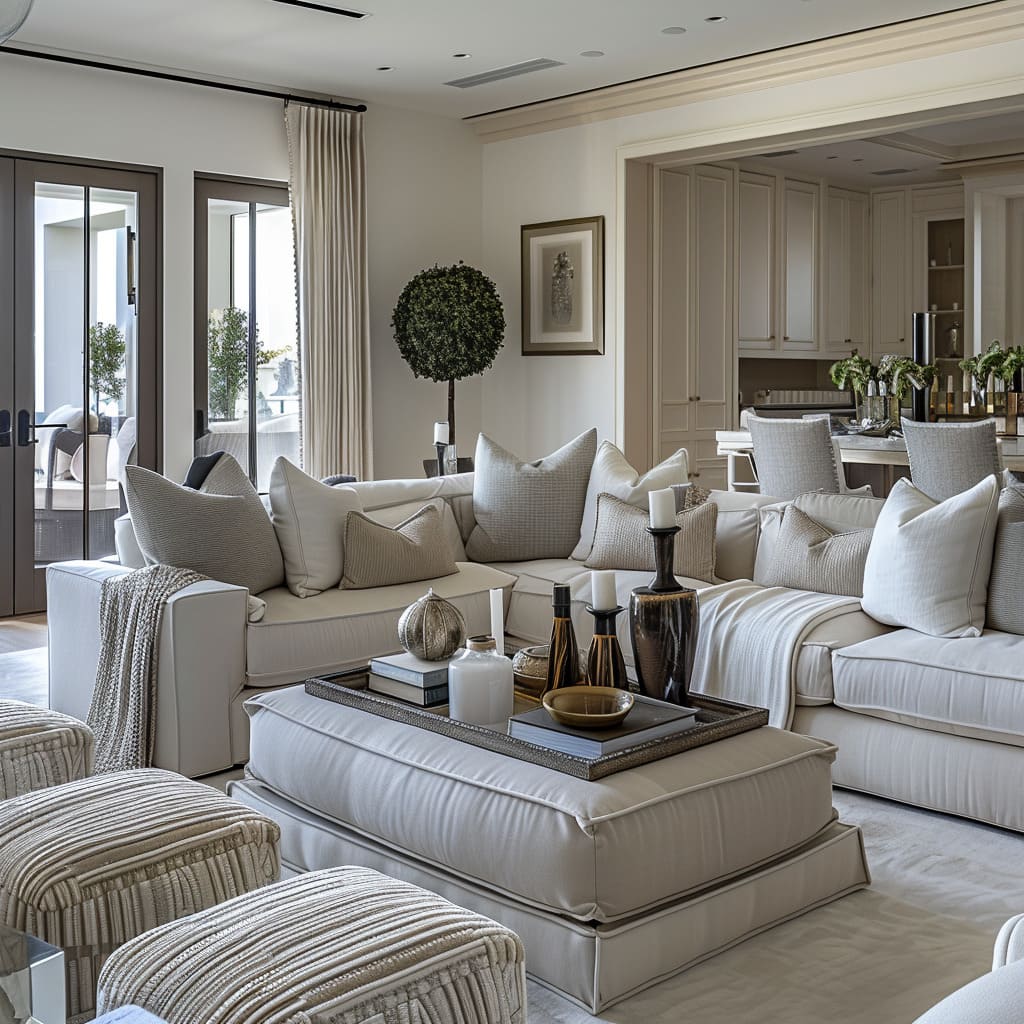Sensory Enrichment
Engage every sense to elevate the living experience beyond the visual. This section will guide readers on how to infuse their living spaces with elements that tantalize the senses, from the aromatic to the auditory, creating a symphony of sensory delights.
Aromatic Elements Use scented candles or essential oil diffusers to engage the senses and enhance the room’s ambiance. Enlivening the atmosphere with a subtle diffusion of scent, consider placing aromatic elements in strategic locations where they will gently release their fragrance as people move through the space.
A well-chosen aroma can shift the mood from morning brightness to evening calm, making for an adaptable and refreshing environment.
Ambient Sound Design Integrate a sound system that can mimic natural sounds or play soft music, contributing to a relaxed atmosphere. Crafting an audio landscape within the room by embedding a discreet sound system allows for an enveloping auditory experience.
The gentle hum of nature or the soft whisper of melodic tunes can act as an auditory backdrop that complements the visual aesthetics, bringing forth a calming rhythm to the daily flow.
Textured Window Dressings Opt for window treatments with tactile appeal, like woven shades or linen drapes, to contribute to the cozy atmosphere. The choice of window dressings can add not only privacy but also tactile variance.
With materials that invite touch, such as plush woven fabrics or soft linen, the window treatments can play with light and shadow, casting patterns that dance across the room with the changing sun. Interactive Art Pieces Include art installations that invite interaction, such as a piece that changes with viewer perspective or lighting.
By incorporating art that moves or changes with light and perspective, the living space becomes a dynamic gallery. These pieces encourage contemplation and conversation, becoming more than just visual anchors but participatory elements that reflect the fluidity of the living environment.
Visual and Functional Artistry
In this segment, we discuss how to incorporate practical yet visually appealing elements that serve more than their intended function. These elements are the cornerstone of intelligent design, combining utility with aesthetic pleasure.
Dynamic Wall Treatments Employ wallpapers with understated designs or wainscoting to introduce visual interest without overwhelming the space. Walls are not merely boundaries but canvases waiting for expression.
By choosing wallpapers that carry gentle designs, one can infuse character into the room without commanding the center stage. Wainscoting adds a layer of sophistication, offering a subtle play of shadow and light, contributing to a design that rewards closer inspection without clamoring for attention.
Curves and Contours Soften the look of the room with furniture and decor featuring curves and rounded edges. In the geometry of room design, curves act as the soft whispers against the hard facts of straight lines.
Selecting furnishings that boast smooth curves and rounded edges not only soothes the eye but also facilitates flow within the space. These forms echo the natural world, where sharp corners are rare, thus invoking a more organic and inviting atmosphere.
Accent Trims and Molding Apply trims or molding to furniture or walls to introduce subtle decorative elements without being overly ornate. With a deft touch, one can introduce a current of grace through the application of trims and moldings.
These elements should whisper of refinement rather than shout, providing a frame that enhances rather than dominates. They are the quiet notes that, when played correctly, can transform the symphony of a room’s design into something truly harmonious.
Bespoke Craftsmanship Feature items crafted by artisans, from custom-made furniture to handmade ceramics. Celebrating the hand and mind of the maker, bespoke items bring a narrative of craftsmanship into the space.
From the singular statement of a custom-made furniture piece to the tactile beauty of handmade ceramics, these elements bring a sense of legacy and permanence. They serve as anchors within the design, grounding the ephemeral nature of fashion with the timelessness of craft.
Ambient Comfort and Flexibility
Ambiance and adaptability can transform a static room into a versatile haven. This section delves into how the right lighting and adaptable furniture can create an atmosphere that accommodates every occasion and mood.
Multilevel Lighting Use a variety of light sources at different heights, like floor lamps, table lamps, and sconces to create a warm glow. To infuse a living space with the right illumination, consider installing a medley of light sources.
Floor lamps cast a stretch of light upward, creating a tall column of warmth, while table lamps offer a concentrated pool of glow, ideal for intimate gatherings or quiet reading. Sconces affixed to walls add a layer of soft luminance, washing the walls with a subtle light that can transform the ambiance from the flick of a switch.
The ability to adjust these lights in intensity and location allows for an atmosphere that can be attuned to the time of day or the desired mood.
Adaptive Furniture Invest in furniture that can adapt to various needs, such as extendable tables or modular sofas. Furniture should not be static; it must evolve with the needs of the space and its occupants.
An extendable dining table stands ready for large family feasts or can shrink for a more intimate setting. Modular sofas offer the flexibility to reconfigure seating arrangements, ensuring the space remains fluid and responsive to the requirements of various occasions.
These adaptable pieces serve as the cornerstone of a flexible living environment.
Seasonal Adaptability Incorporate elements that can change with the seasons, like interchangeable slipcovers or seasonal throw pillows. Embracing the cyclical nature of the seasons, the living space can be dressed in elements that reflect the time of year.
Interchangeable slipcovers can transform the look of a sofa from a light, breezy linen for summer to a rich, velvety texture for winter months. Seasonal throw pillows, with their patterns and hues, act as cues to the changing outside world, allowing the interior to be in constant conversation with the external environment.
Fireplace Design If a fireplace is present, design it with unique materials or in a non-traditional shape to make it a focal point. The hearth of a home should be as distinctive as its inhabitants.
Moving beyond traditional designs, modern fireplaces utilizing unconventional materials or innovative shapes become a statement piece within the room. Whether the design is sleek and minimal or robust and industrial, the fireplace stands as a central gathering point, offering not just warmth but a visual anchor around which life unfolds.
Spatial Composition and Harmony
This section examines the subtleties of arranging a space to achieve a harmonious blend of form and function. By considering zoning, storage, and the flow of movement, we can compose a room that is both coherent and inviting.
‘Zoning with Rugs Use area rugs to define different ‘zones’ within the space, adding to its functionality and warmth. The strategic placement of area rugs can subtly demarcate areas within an open floor plan, designating spaces for conversation, dining, or repose.
These rugs act as soft landmarks, their textures and colors adding visual cues to the division of the room. They contribute not just to the aesthetics but to the acoustic quality of the space, dampening sound and enhancing the sense of intimacy within each designated zone.
Hidden Wiring Solutions Keep the space uncluttered by using smart solutions to hide wires from electronics and lighting. In the modern age, electronic devices are a necessity, but their wiring need not be a visual distraction.
Ingenious solutions that conceal cords and cables maintain the sleek look of a space. Channels within walls, discrete conduits, or furniture designed with built-in cord management can all maintain the streamlined look of a room, ensuring that attention remains on the design elements, not on the mechanics of modern living.
-Mounted Shelving Introduce wall-mounted shelves for displaying objects, plants, or books without taking up floor space. Shelving affixed to walls can transcend mere storage, becoming a feature in itself.
Positioned at eye level or higher, these shelves can display treasured objects, verdant plants, or curated collections of literature, all without encroaching upon valuable floor real estate. Thoughtfully arranged, the items on display can add personal touches and a vertical dimension to the room’s decor.
Unique Ceiling Fans Choose ceiling fans that are both functional and aesthetically pleasing, complementing the room’s decor. Beyond their practical application of air circulation, ceiling fans have the potential to serve as an artful addition to a room’s design.
Fans with unique silhouettes, innovative materials, or integrated lighting can become a distinctive element at the pinnacle of the room, combining form and function in a harmonious blend.
Personal Touches and Narratives
A living room becomes a home with the infusion of personal touches and narratives that resonate with the occupants. This passage explains how to select and showcase elements that tell the story of the inhabitants’ lives and loves.
Personalized Accessories Display items with personal significance, such as family heirlooms or travel souvenirs, to give the space a unique story. Introducing items with a storied past or emotional connection transforms a house into a home.
Whether it’s an inherited timepiece, ceramics collected from global travels, or photographs that chronicle the tapestry of life, these accessories imbue the space with layers of meaning. They serve not only as decorative pieces but also as conversation starters, each with its own history and place in the narrative of the home.
Interactive Light Installations Include lighting that can be customized in color and intensity to suit different moods or times of day. Lighting serves a dual purpose when it’s both functional and interactive.
Fixtures that respond to the time of day or can be attuned to the homeowner’s mood extend the personalization of space into the realm of the sensory experience. A soft amber glow can be inviting at dusk, while a brighter white light might invigorate the morning scene.
Such versatility in lighting allows the living space to resonate with the current ambiance or desired feeling.
Curated Book Collections Arrange books thoughtfully on shelves or coffee tables, inviting guests to browse and read. Books are not mere reading material; they are the embodiment of ideas and stories that reflect the owner’s interests and tastes.
Carefully arranged collections on shelves or in vignettes on coffee tables can be both aesthetically pleasing and intellectually engaging. The titles selected and the manner in which they’re displayed can provide insight into the homeowner’s world, granting guests a glimpse into their mind and heart.
Designing for Serenity
The final touch in crafting a tranquil living space is in the finer details that promote peace and calm. This concluding section focuses on the subtle touches that invite relaxation and tranquility into the transitional living room.
Accentuated Ceilings Utilize ceiling design with elements like wood beams or subtle color contrasts to draw the eye upward and add depth. Ceilings do more than cap a room; they offer an expanse for creative expression.
By integrating structural elements like exposed wooden beams or playing with shades lighter or darker than the walls, one can enhance the dimensionality of the space. The ceiling becomes a canvas, drawing the gaze upwards and giving a sense of loftiness and airiness.
Whether through paint or architectural details, an accentuated ceiling can transform the perception of a room’s proportions, making it feel more expansive.
Muted Color Splashes Instead of relying on neutral palettes, incorporate muted splashes of color through accessories like pillows or throw blankets to add a subtle vibrancy. While a calm base palette sets a restful tone, it’s the infusion of muted colors that brings warmth and character.
Small, strategic bursts of subdued hues through decorative cushions, throws, or even a single piece of art add layers of visual interest without overwhelming the senses. These understated additions lend a touch of vitality, hinting at a deeper personality behind the composed exterior of the room.
Acoustic Considerations Design the room with materials and fabrics that help to dampen sound, creating a quiet, serene space. The auditory atmosphere of a space is as crucial as its visual appeal.
Incorporating soft materials like thick rugs, plush upholstery, and heavy drapes can absorb sound, minimizing echoes and softening the ambient noise level. This conscious choice of materials ensures conversations can be held comfortably without the strain of competing with a room’s resonance, promoting a sense of tranquility.
Organic Elements Introducing components inspired by nature contributes to an atmosphere of calm. The inclusion of organic shapes, like a vase of twisted branches or a bowl of smooth river stones, can bring an element of the natural world indoors.
These pieces serve not only as decor but also as reminders of the tranquil beauty found outside, promoting a sense of relaxation and connection to the earth.
Through thoughtful design choices that appeal to both the visual and auditory senses, a room can become a sanctuary of calm. By paying attention to the subtleties of color, light, structure, and sound, one can create an environment that not only looks serene but also genuinely feels like a retreat from the outer world’s clamor.
Designing with these unique aspects in mind will create a transitional living room that invites coziness and warmth while remaining chic and timeless.

